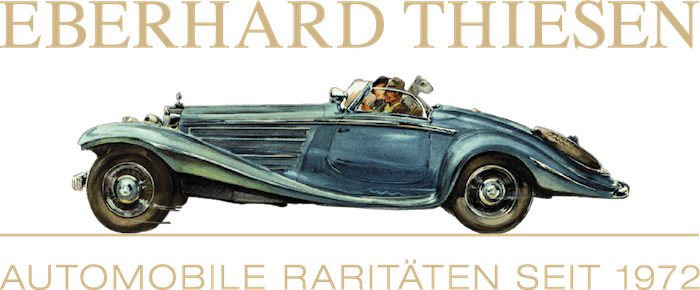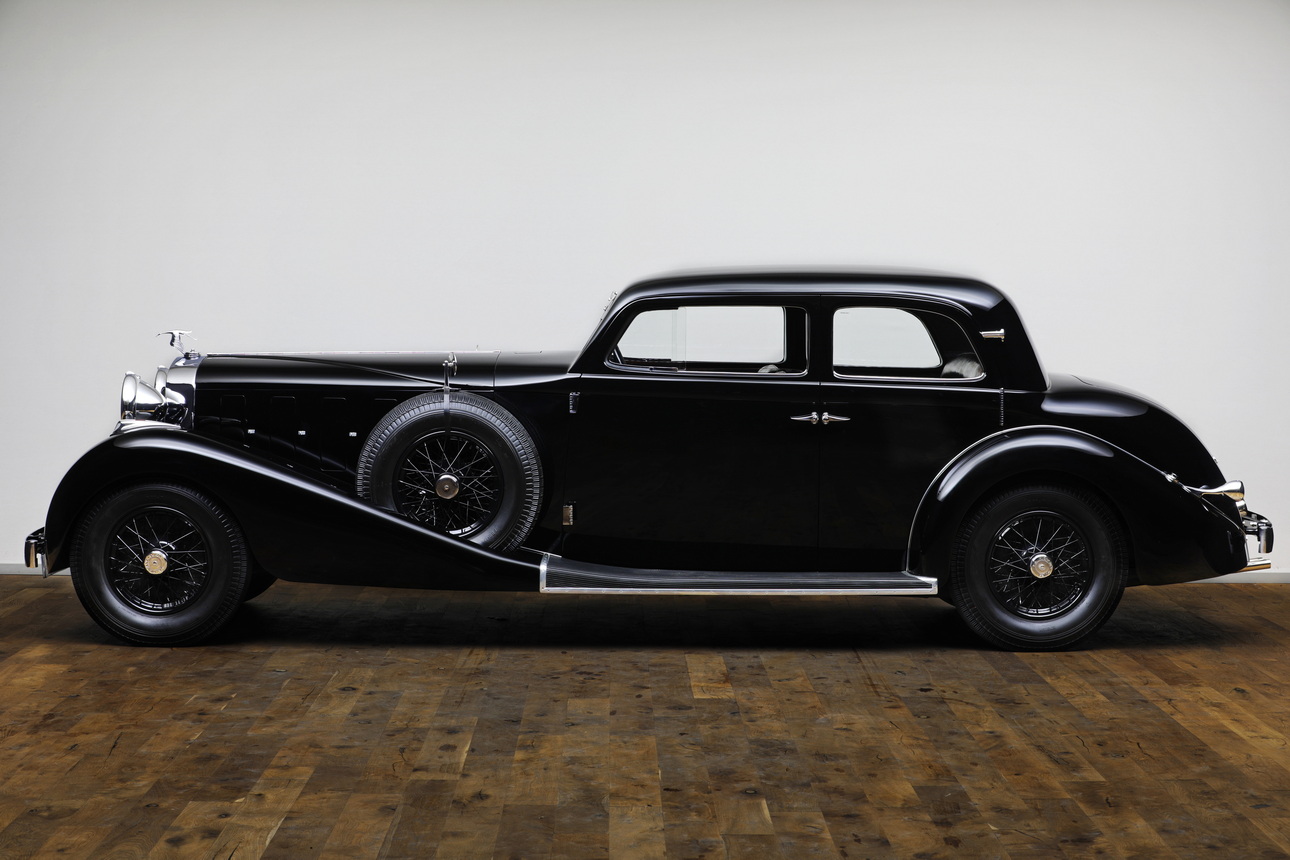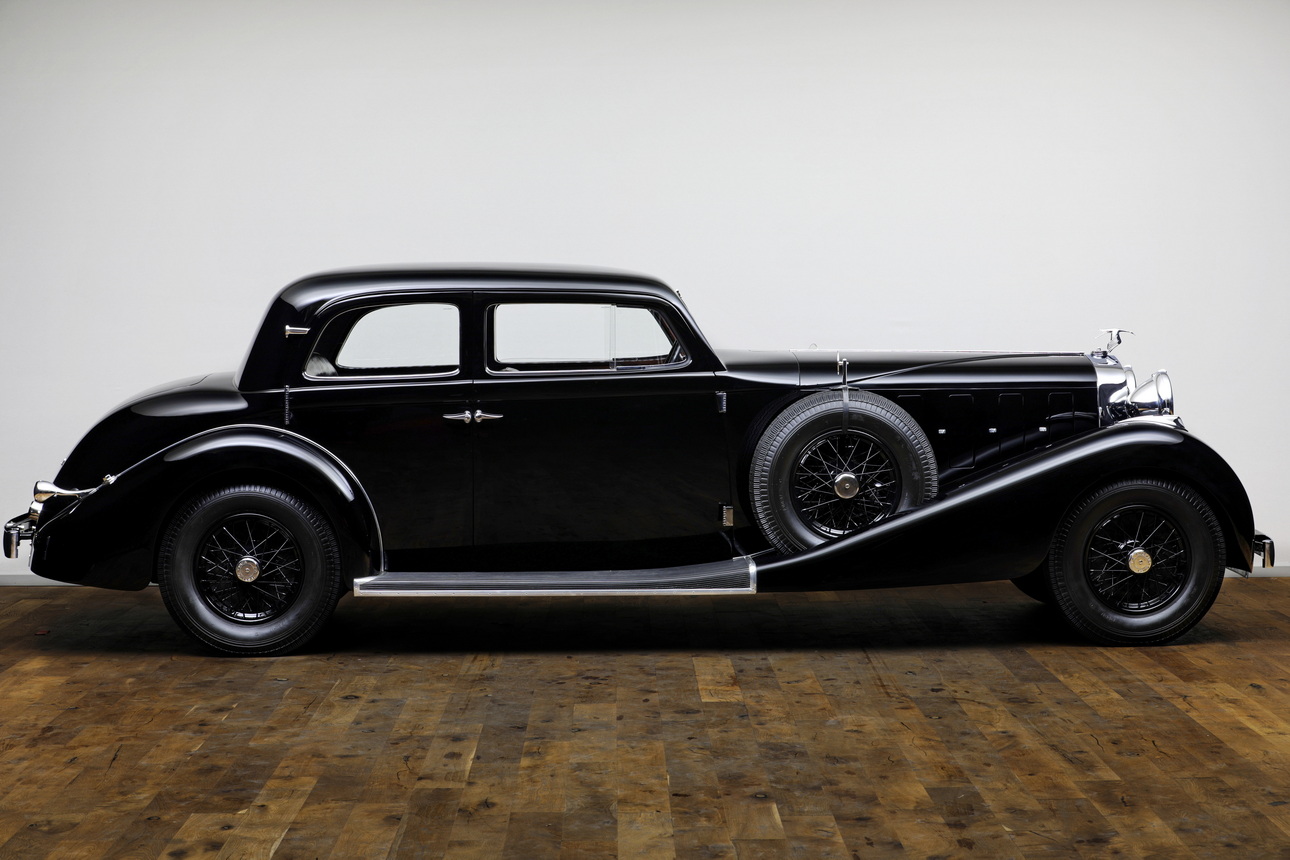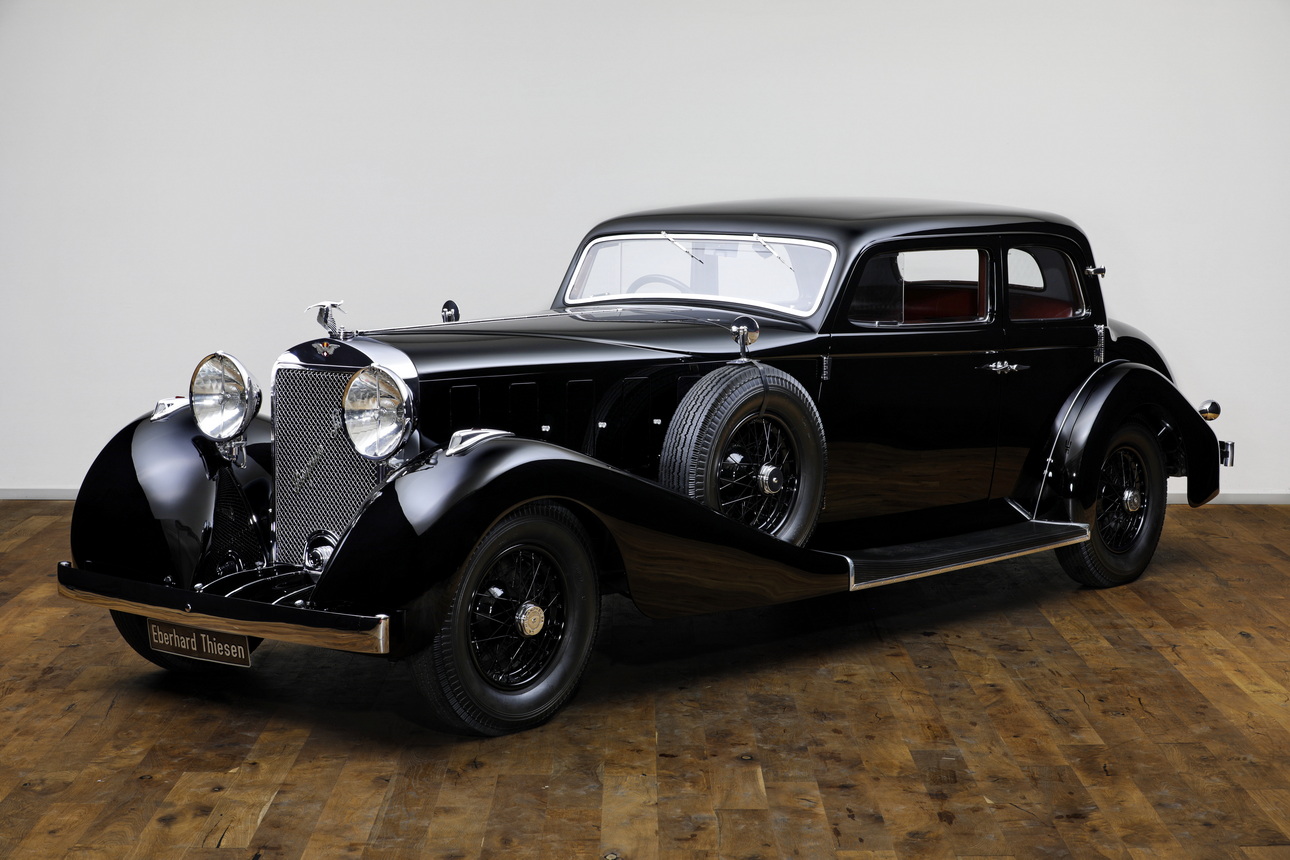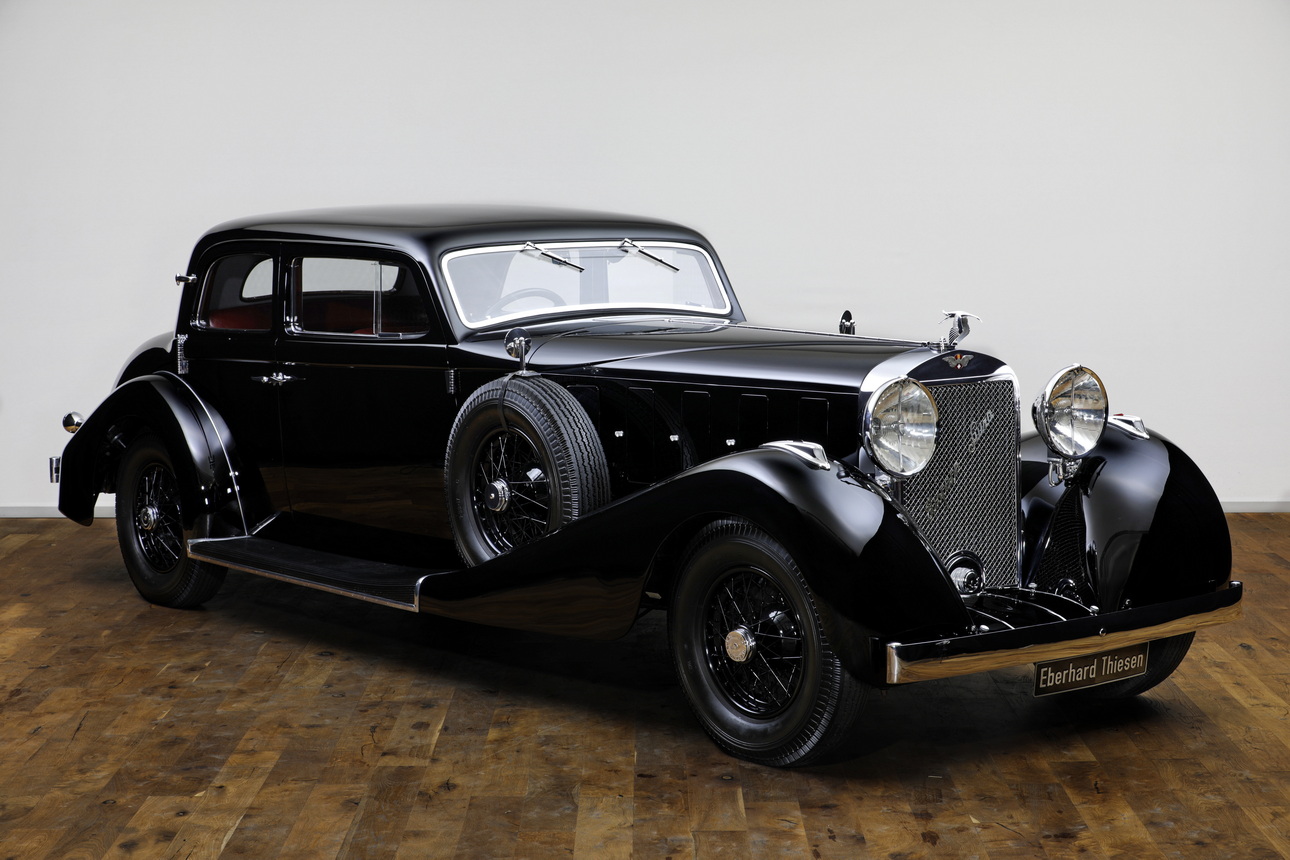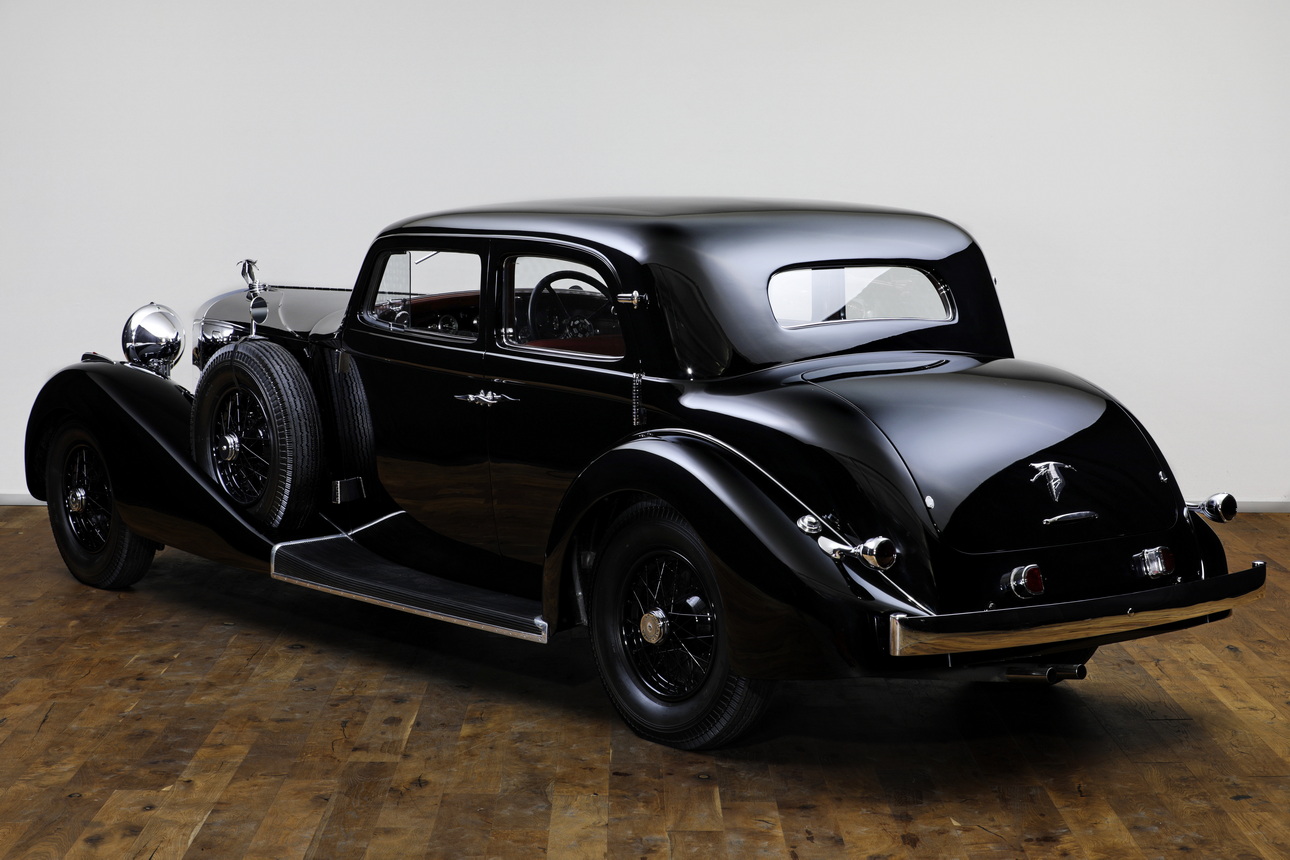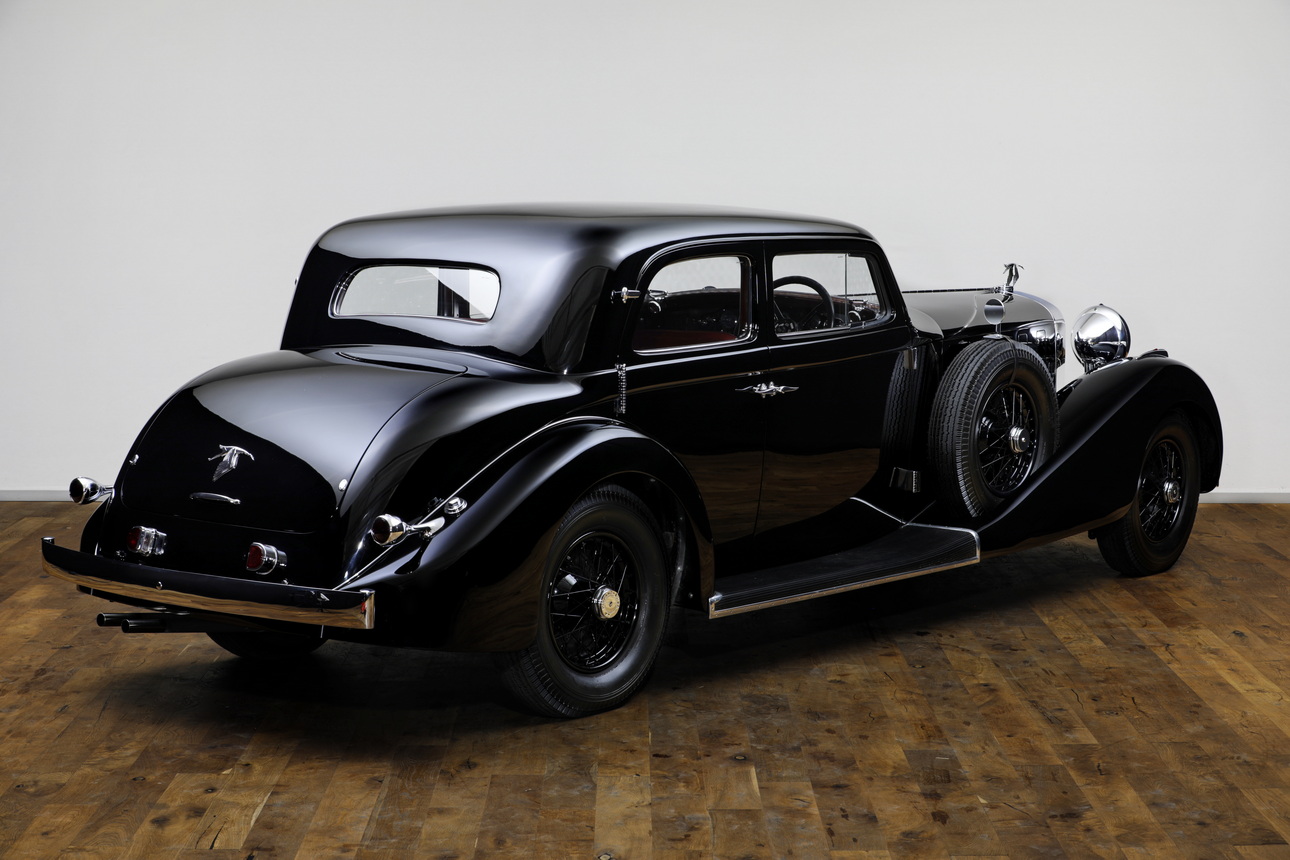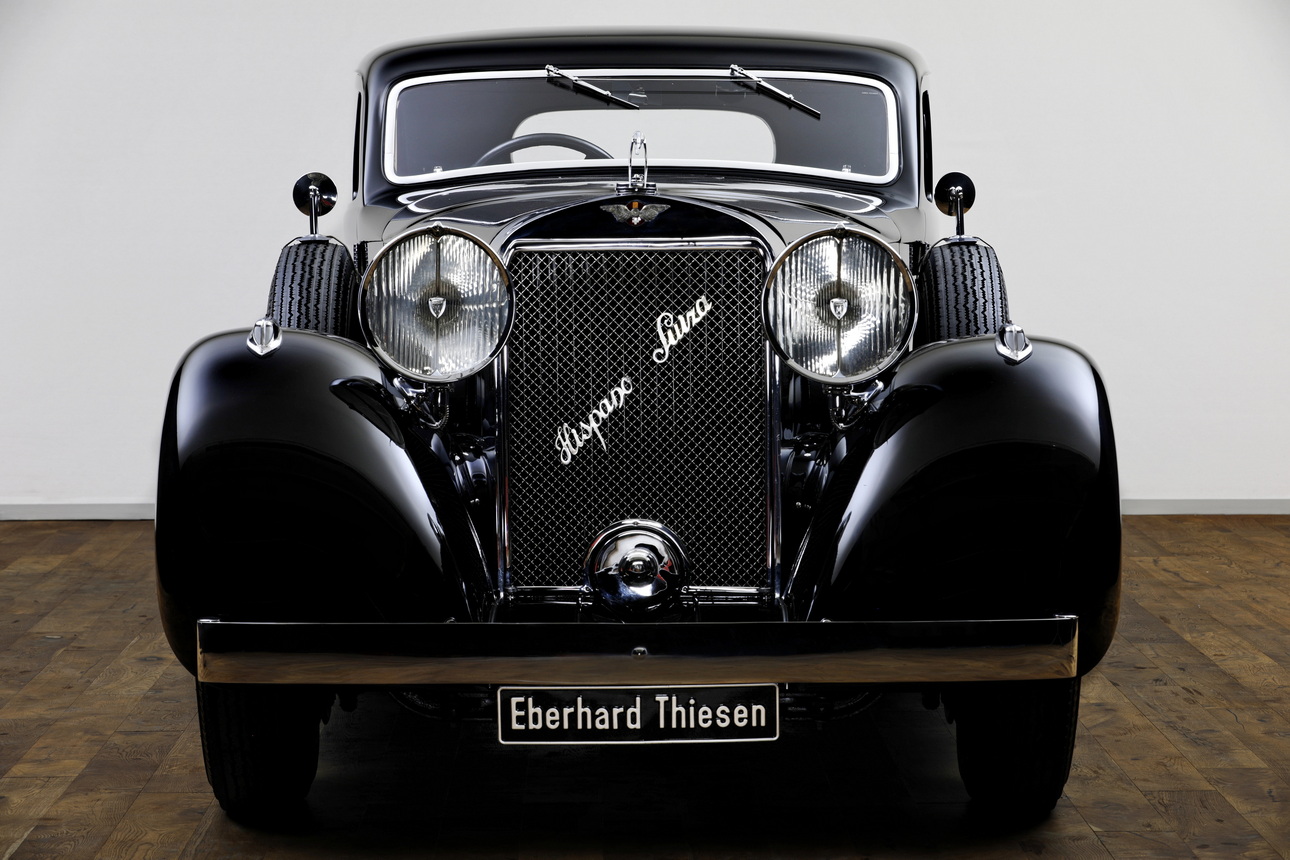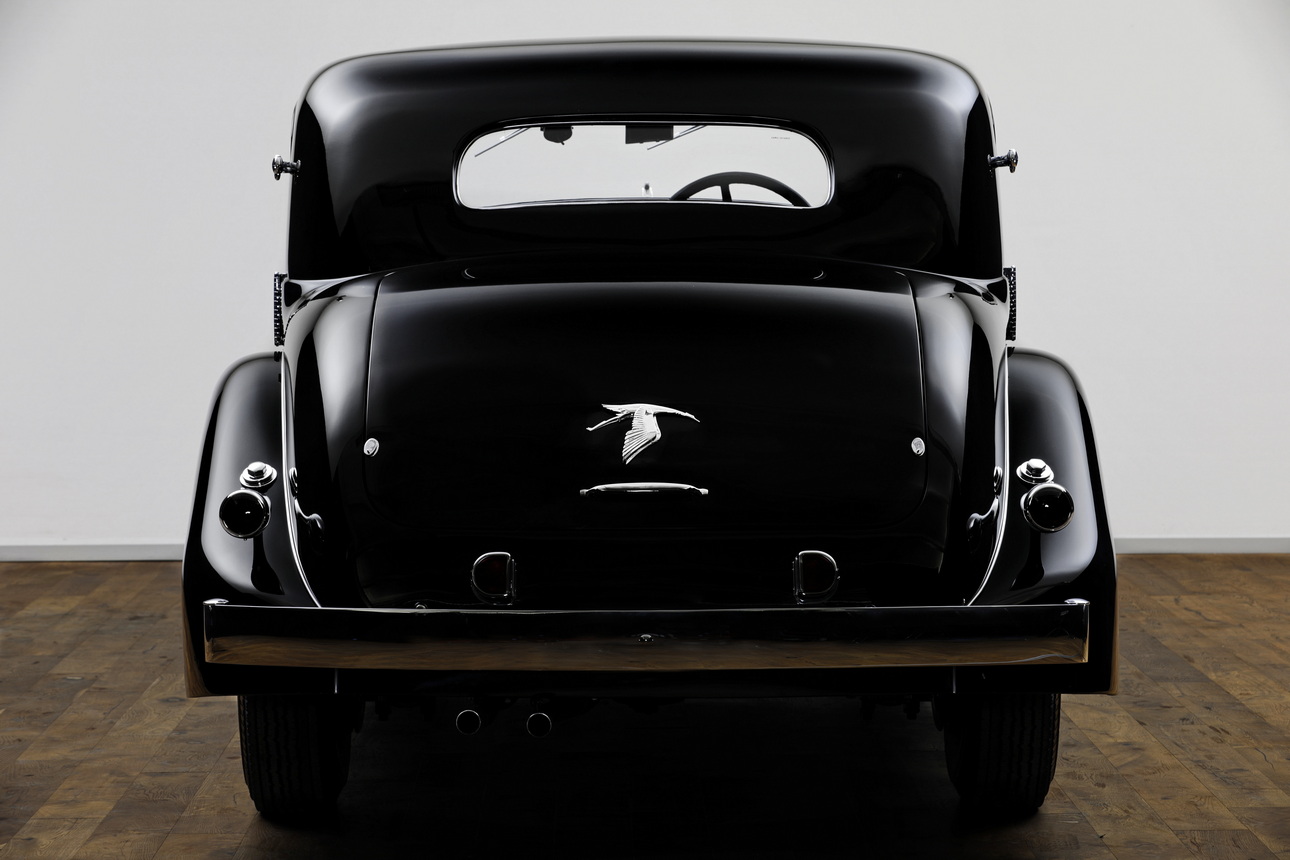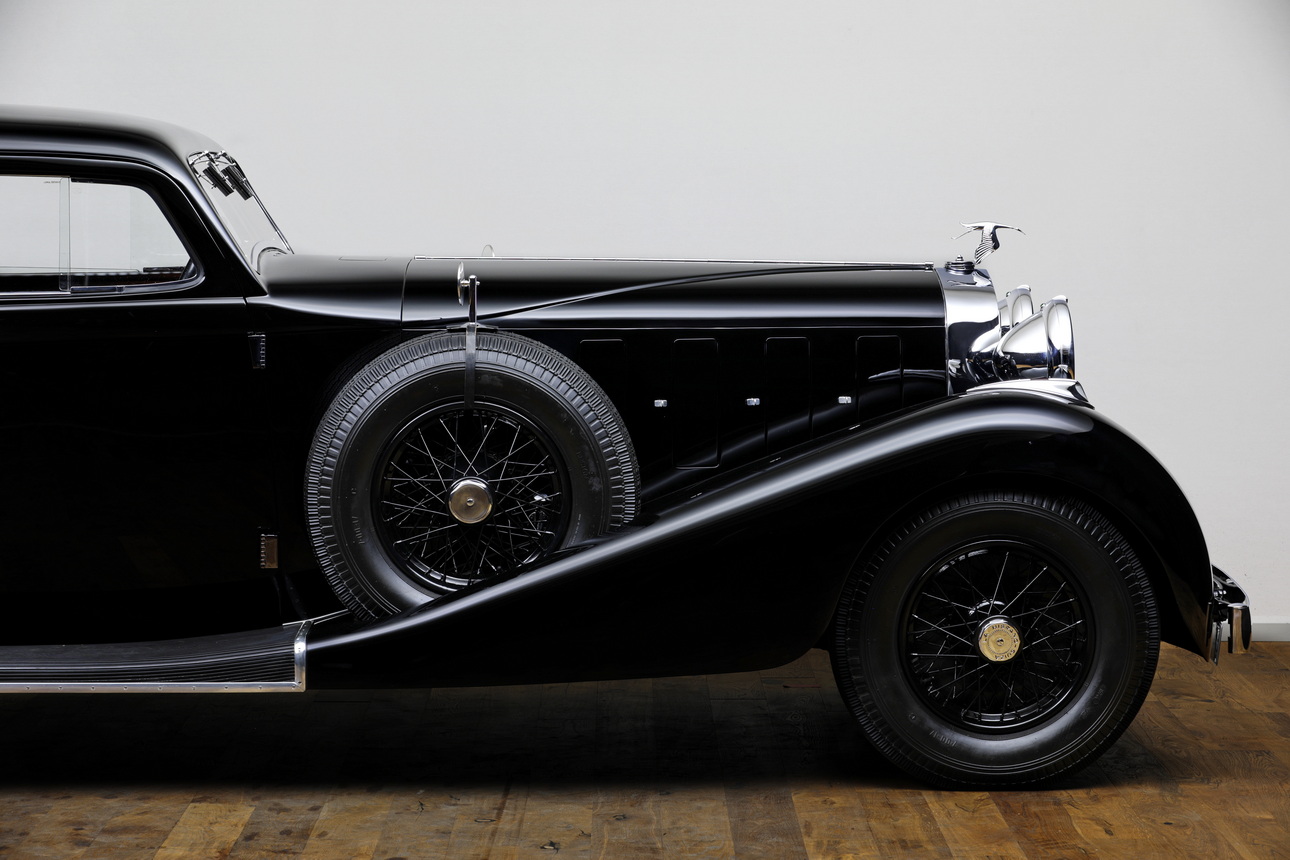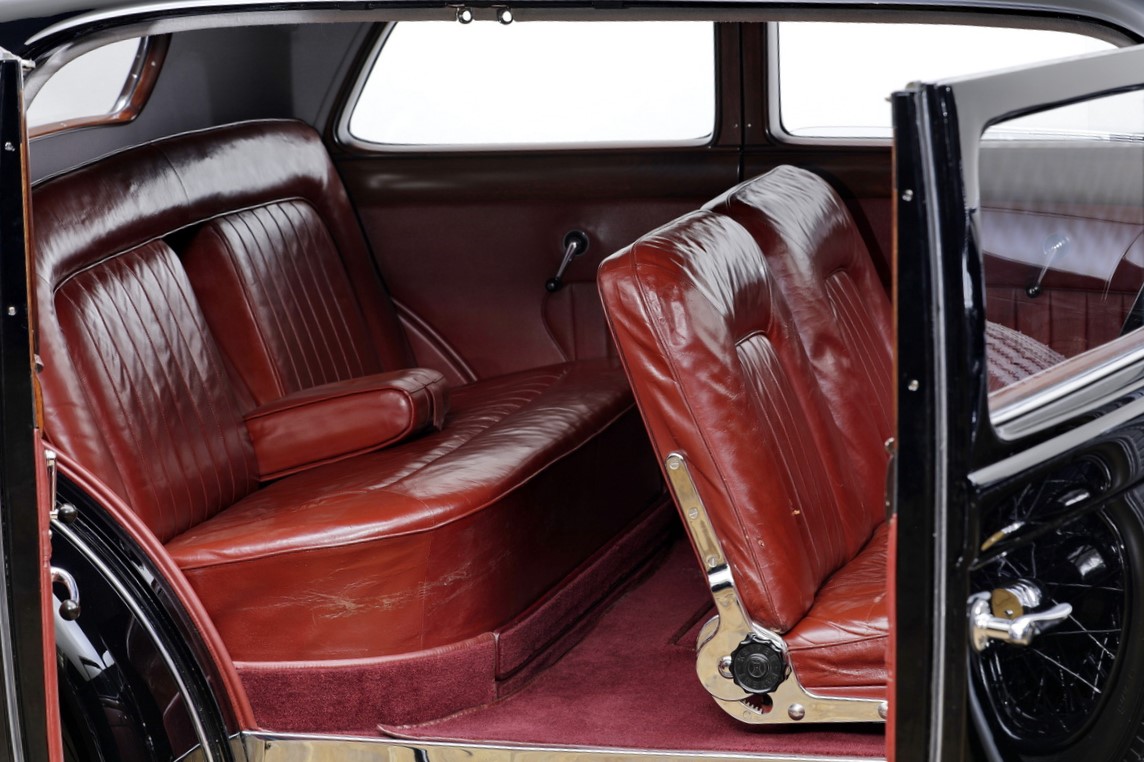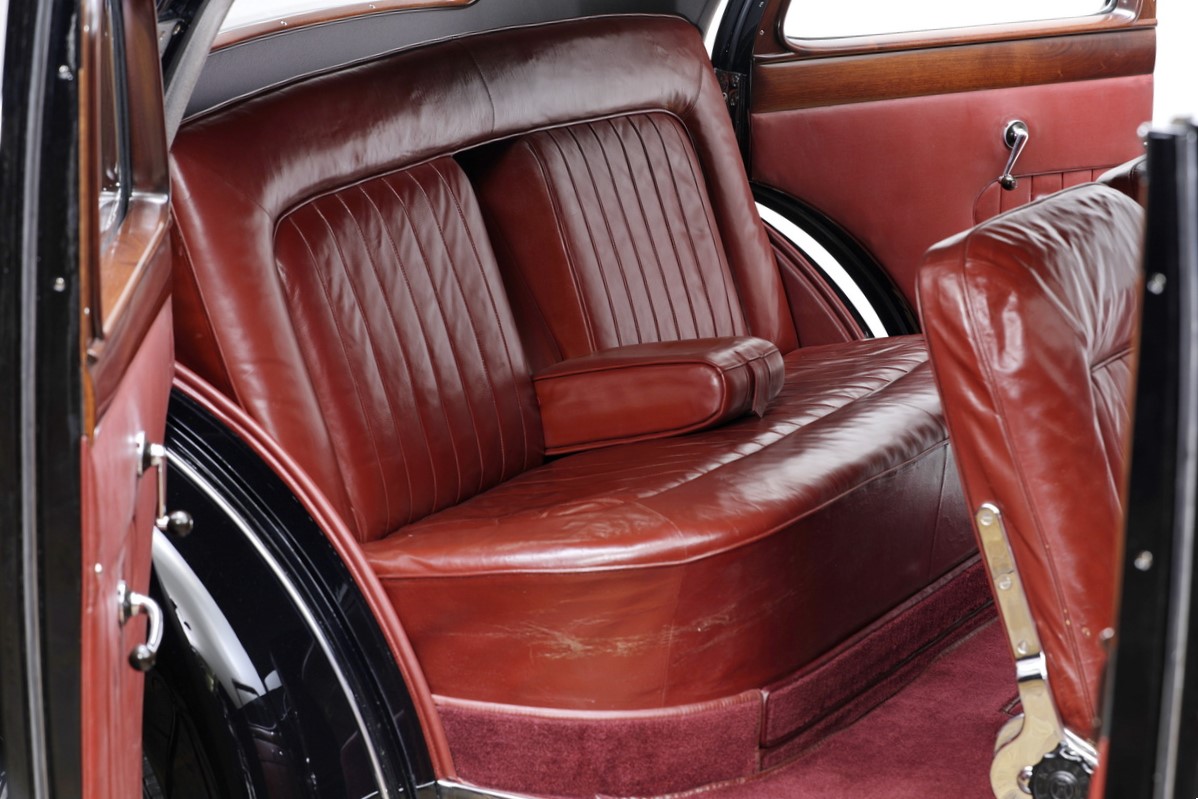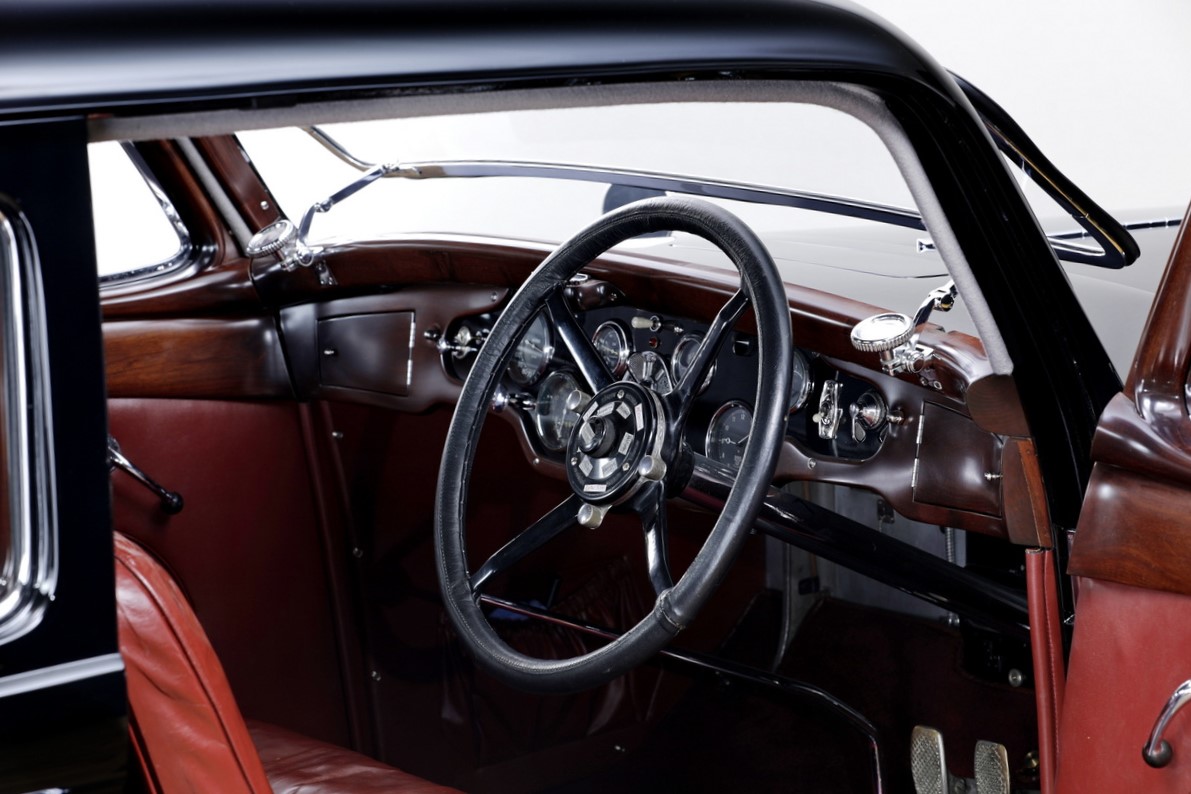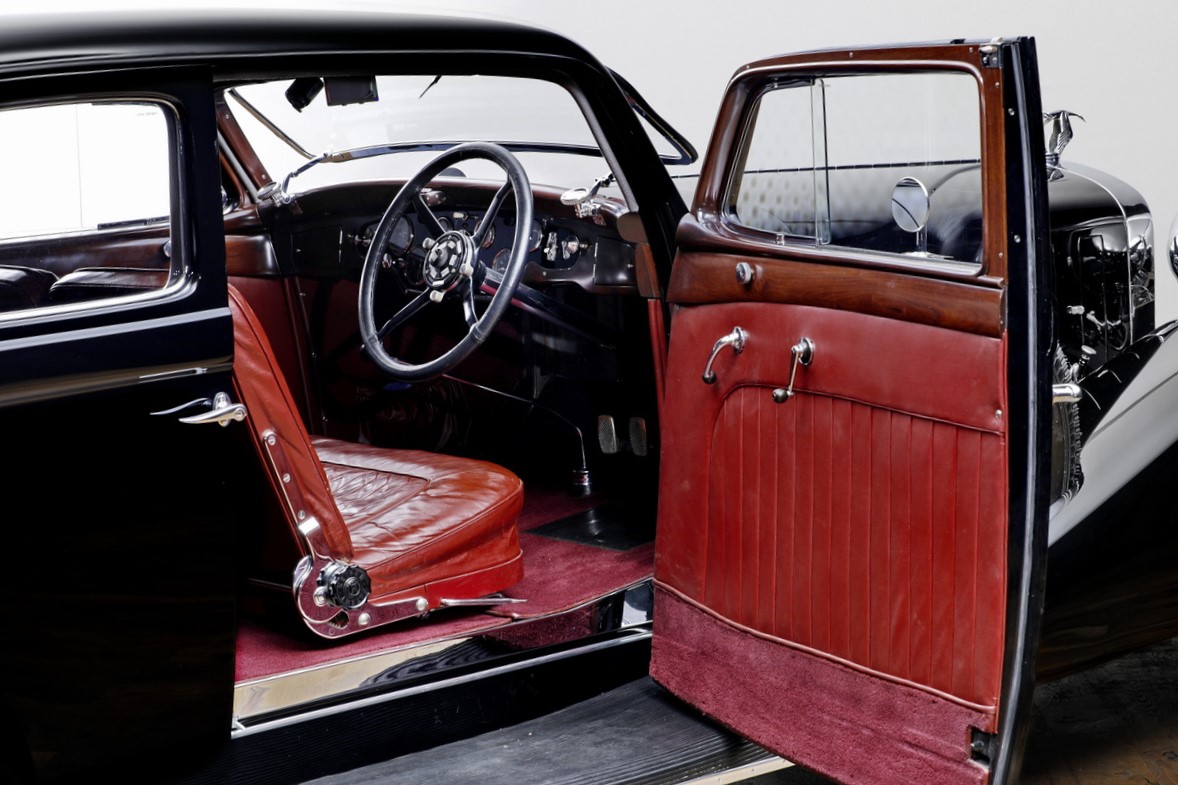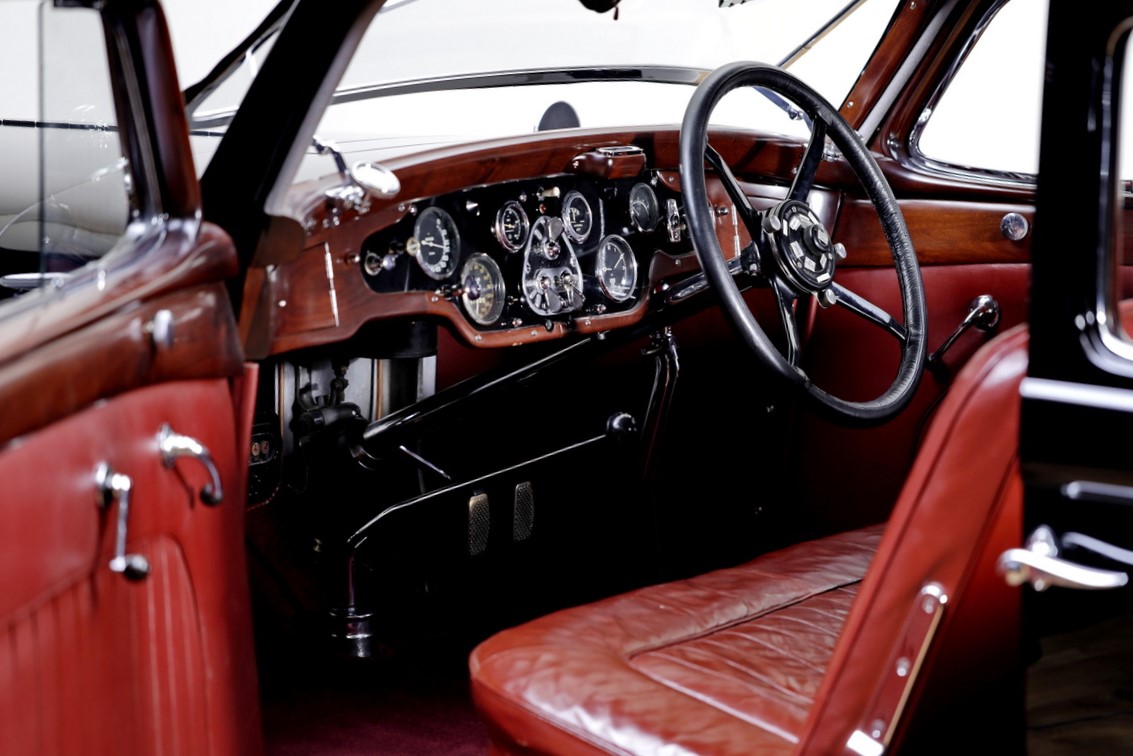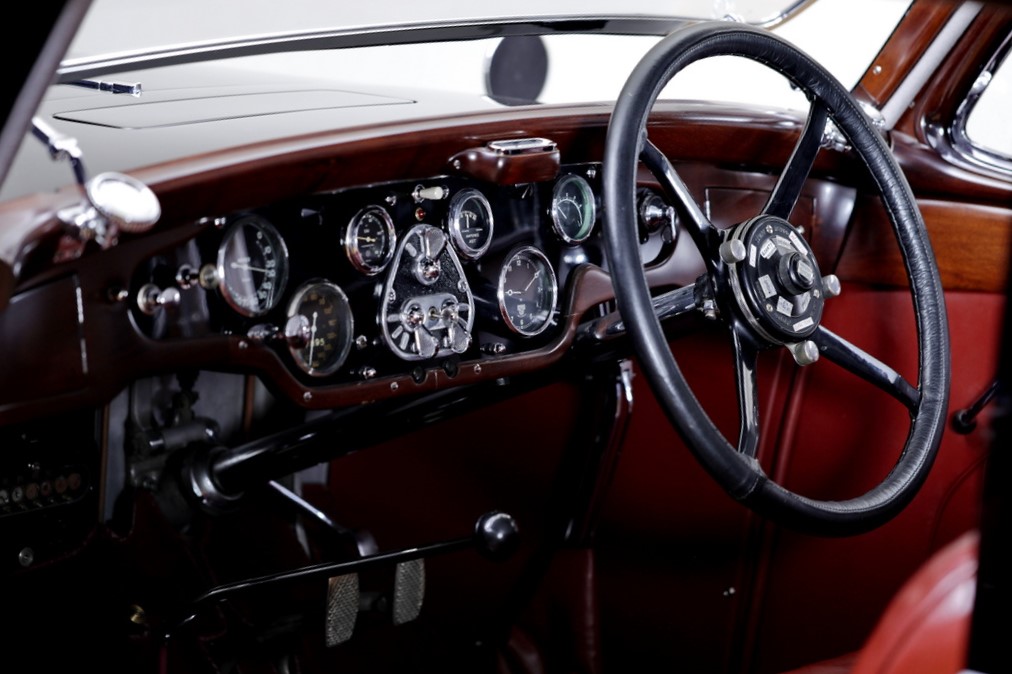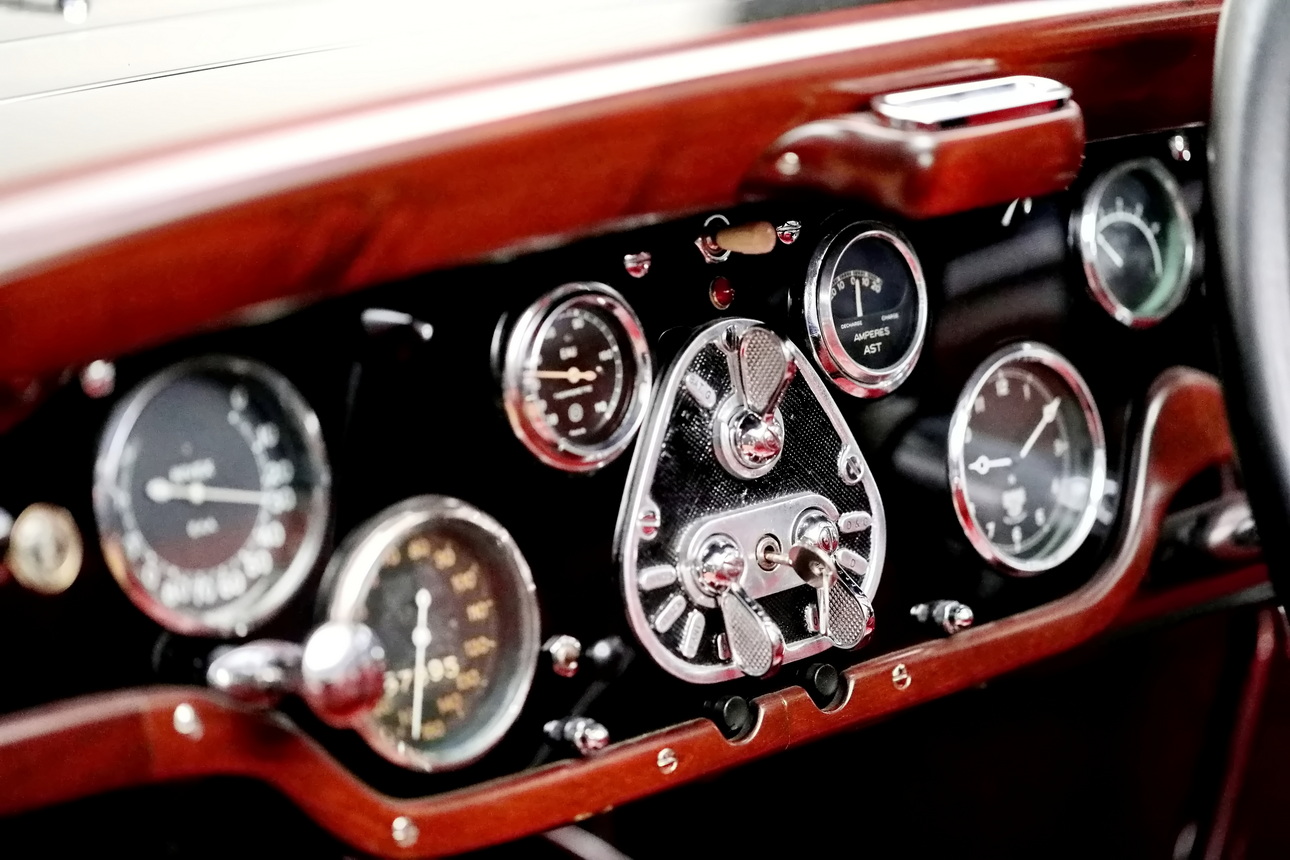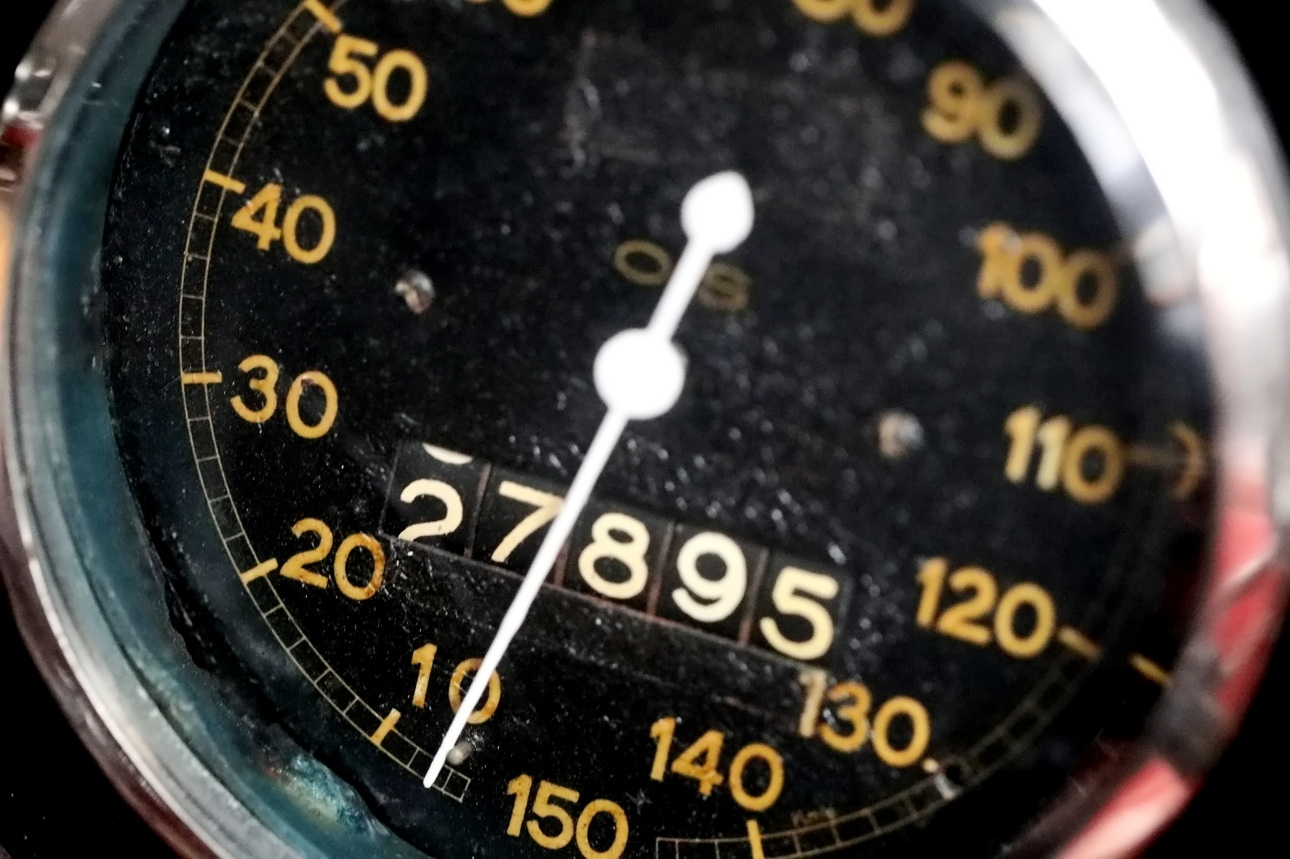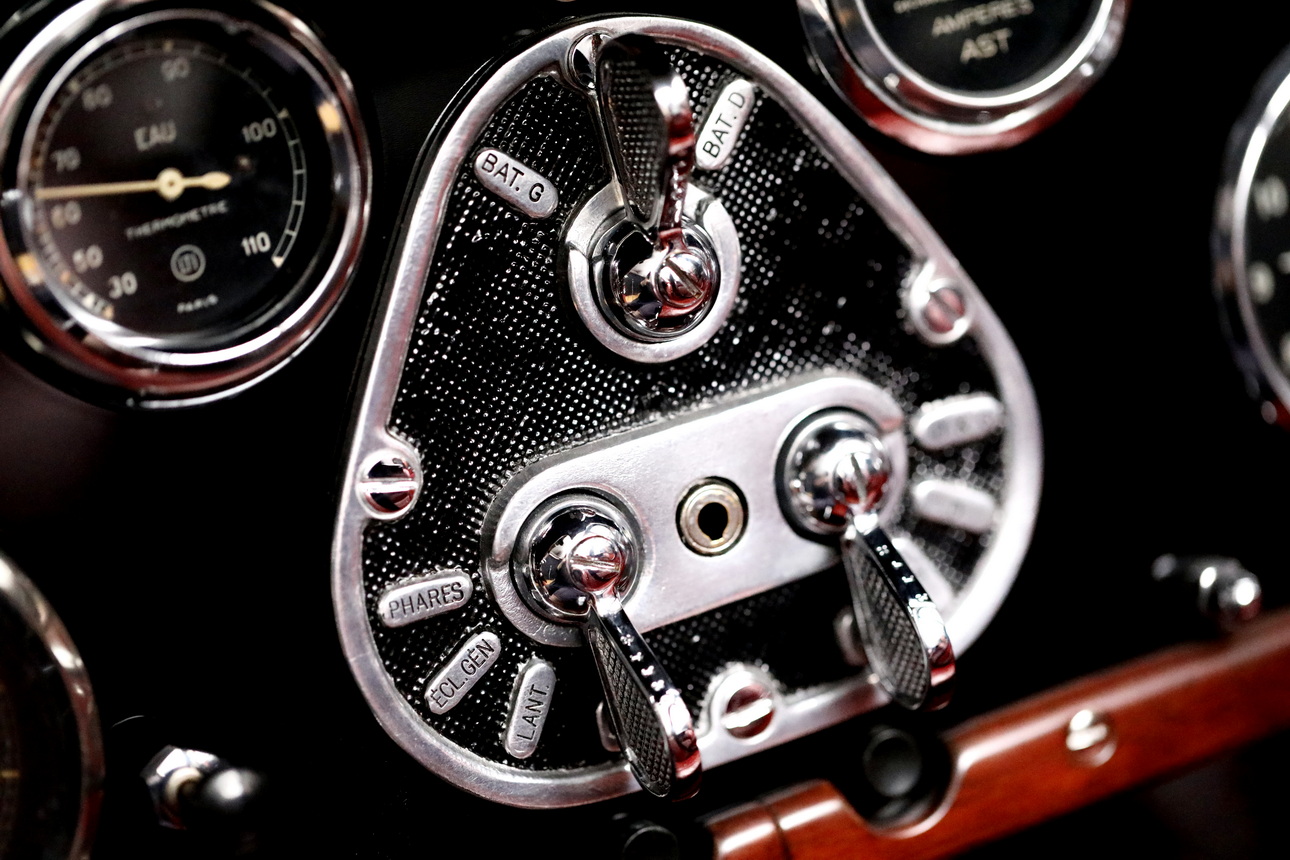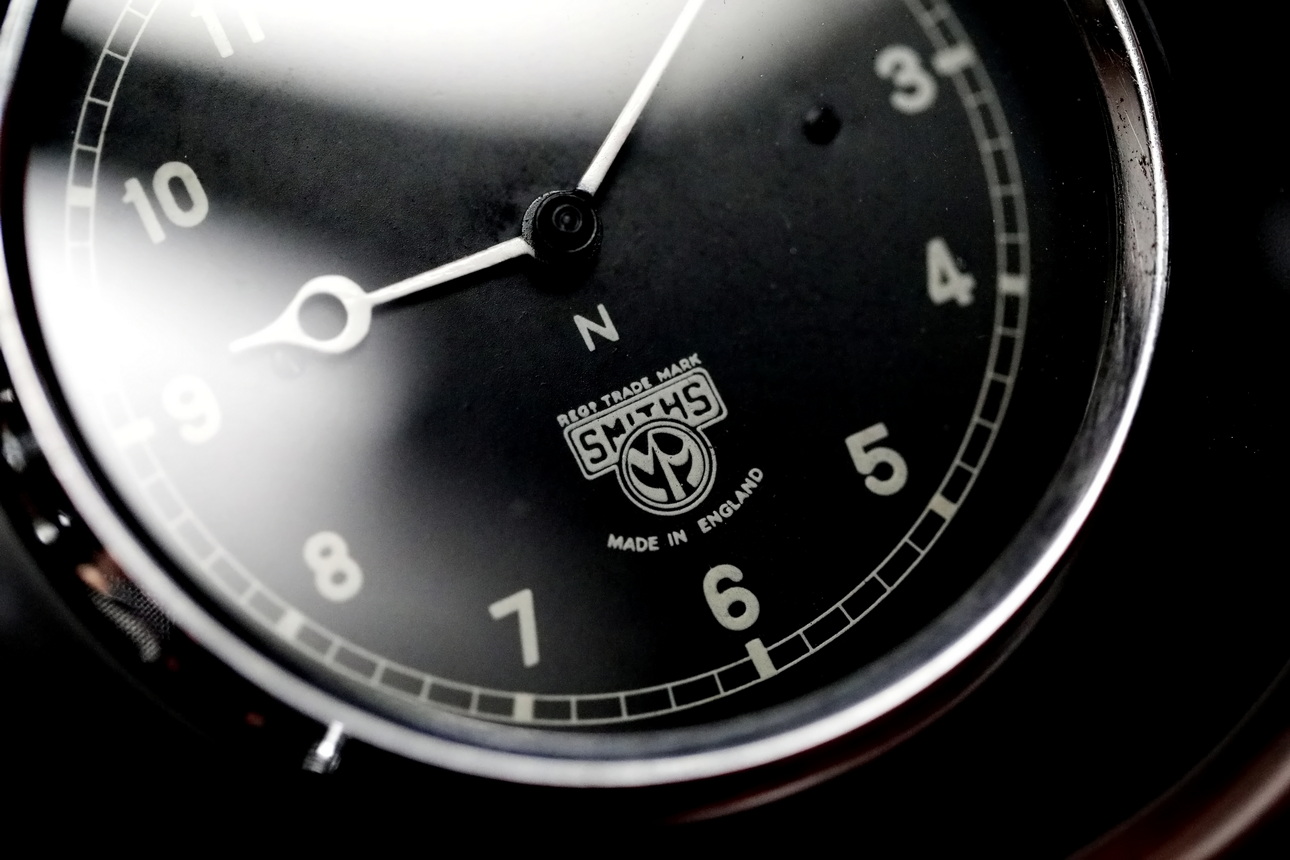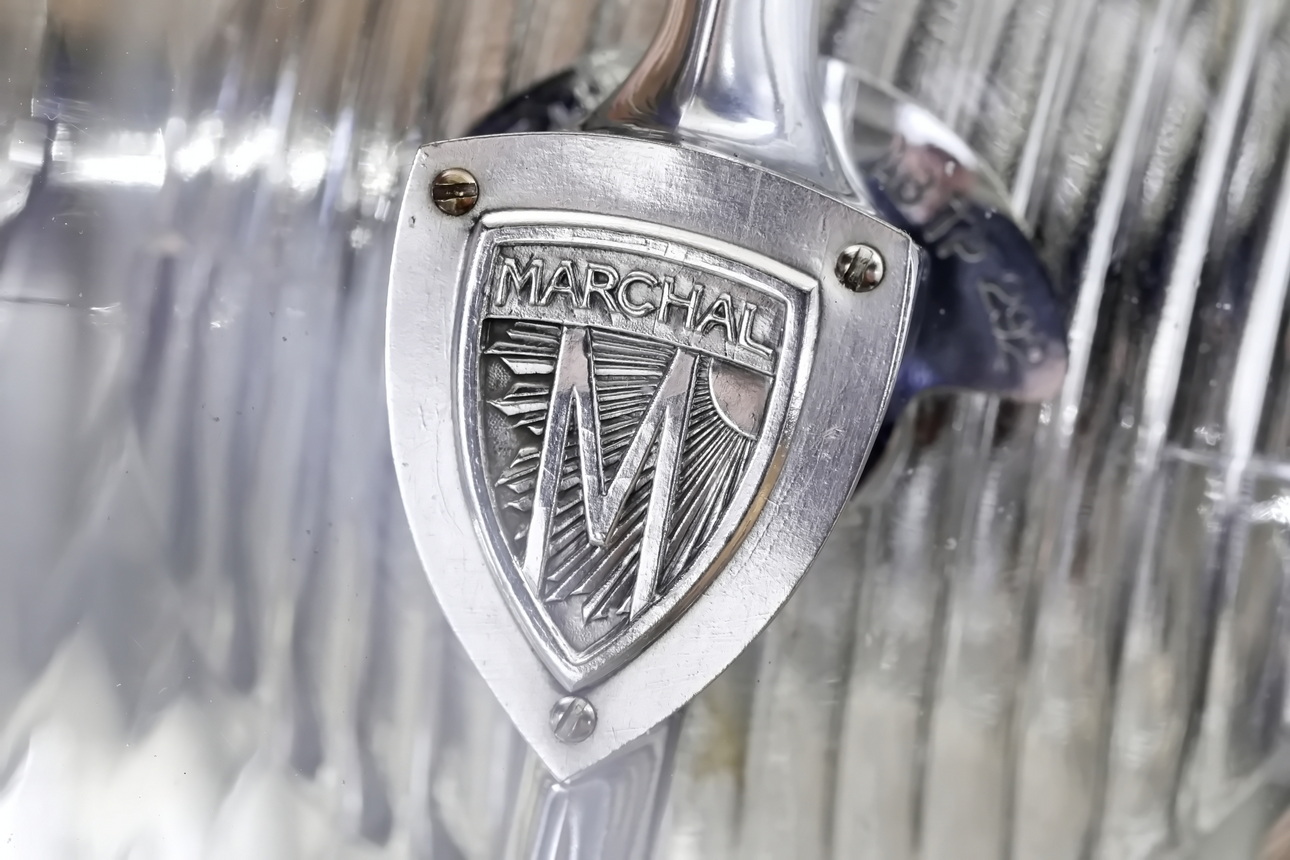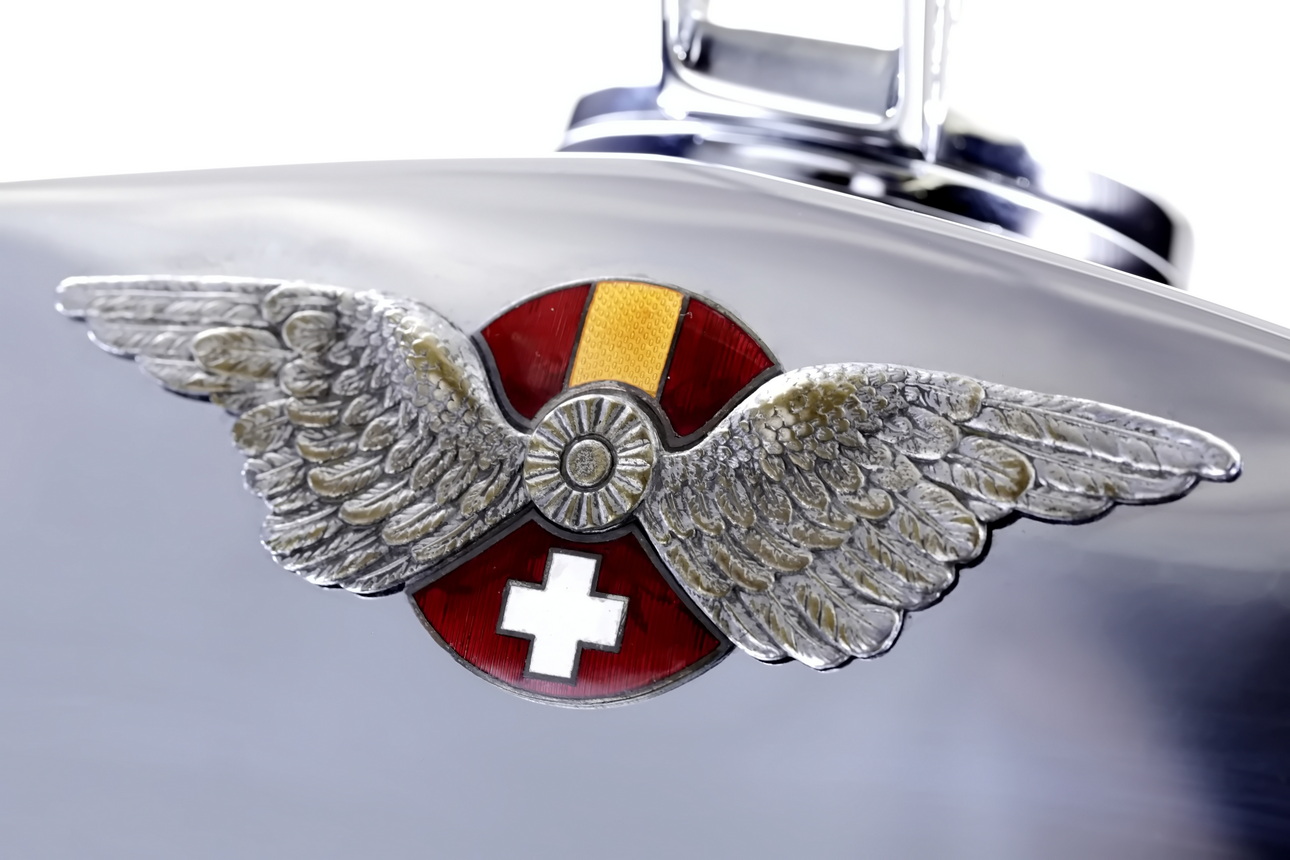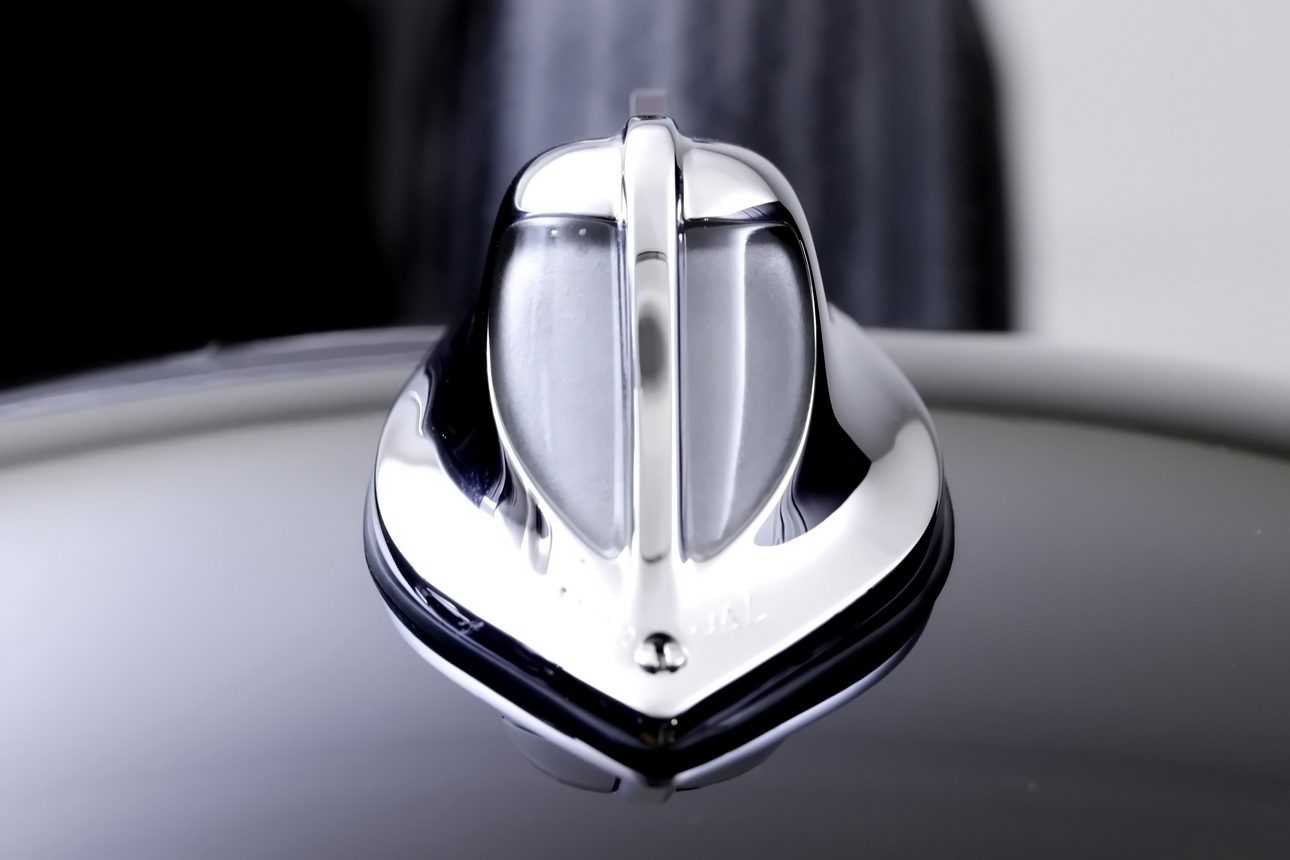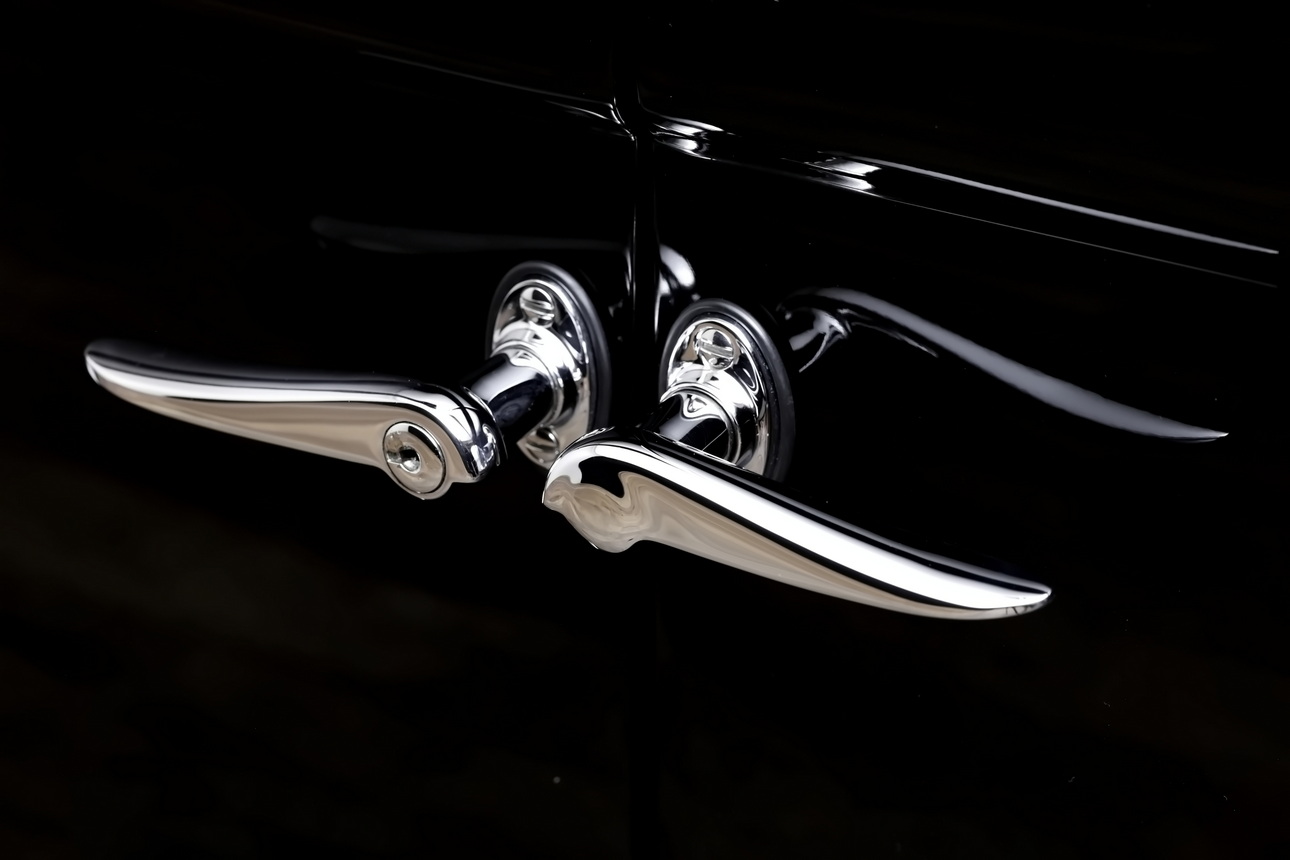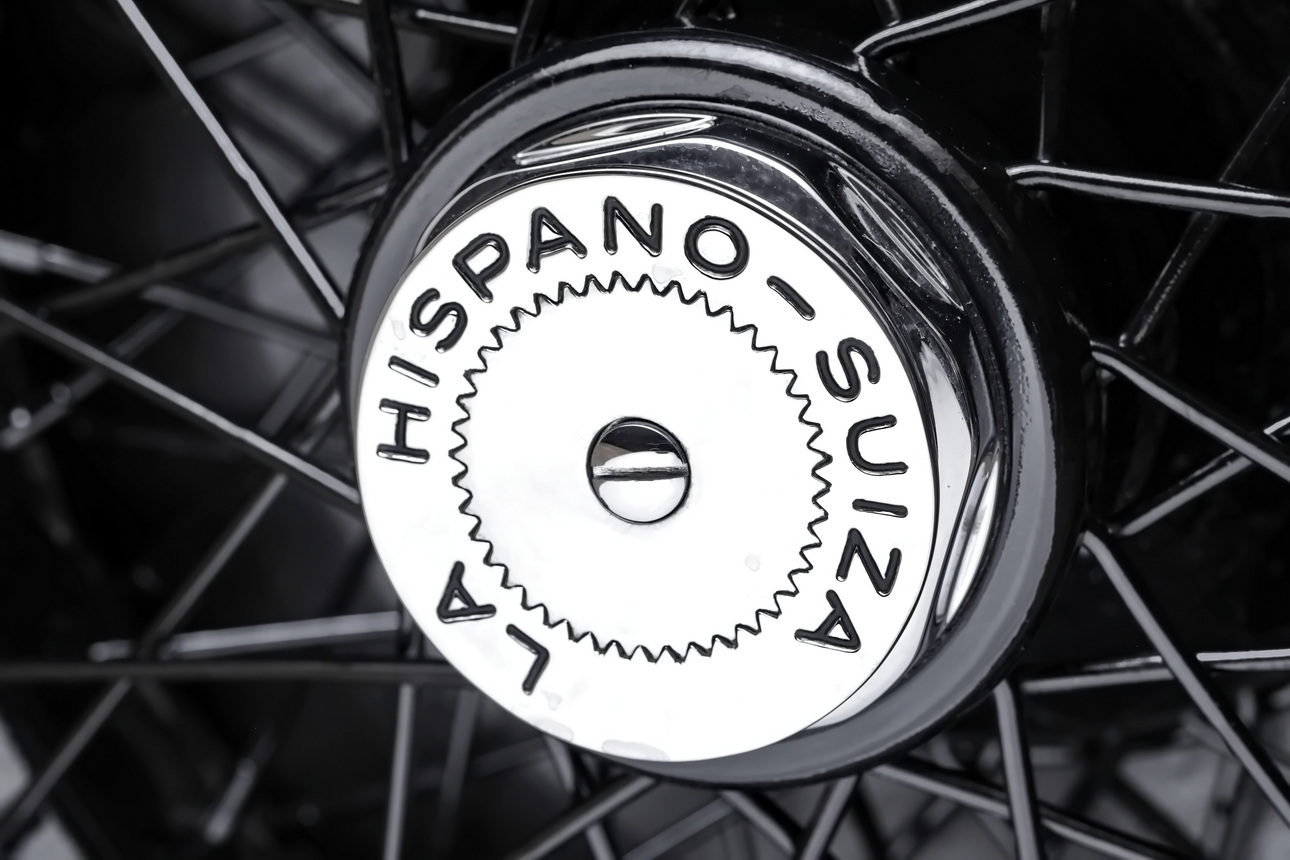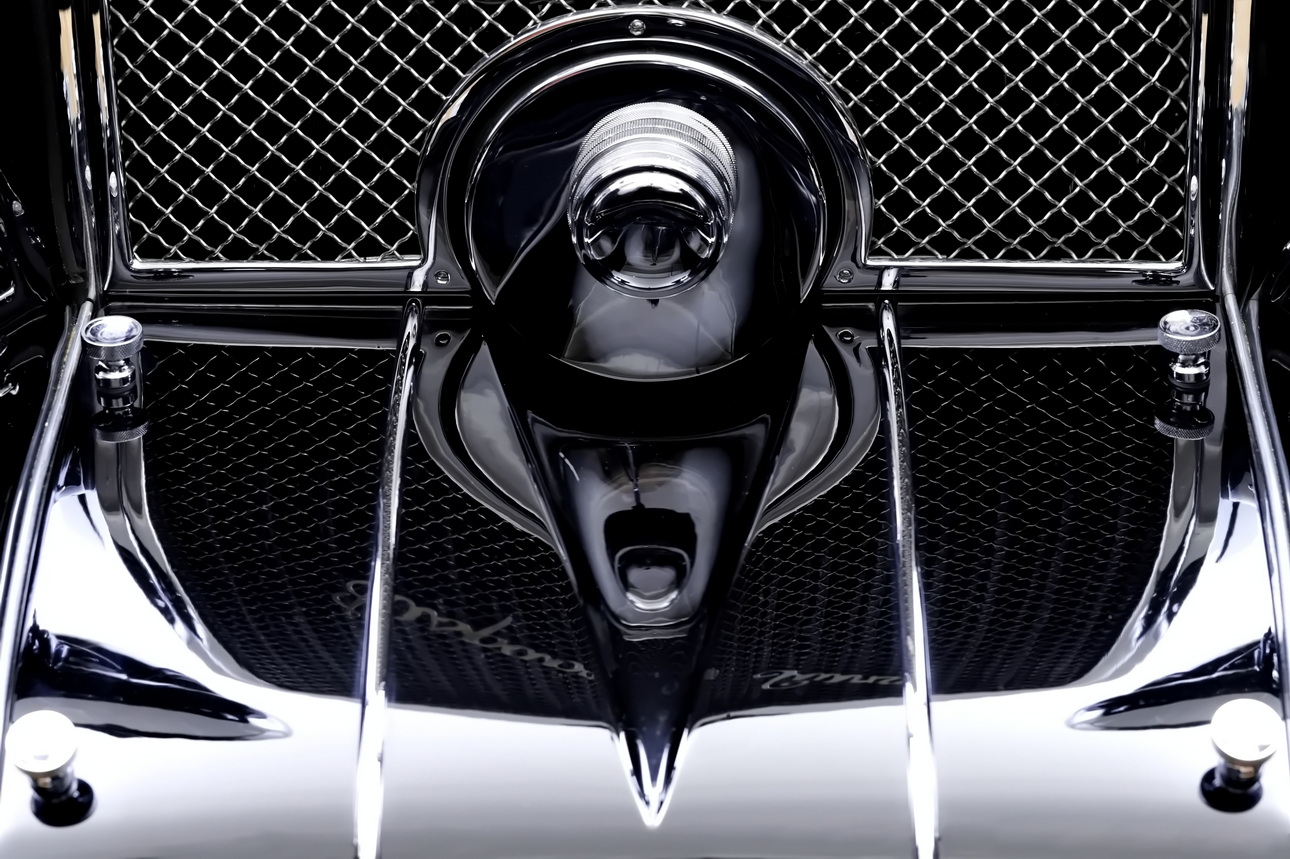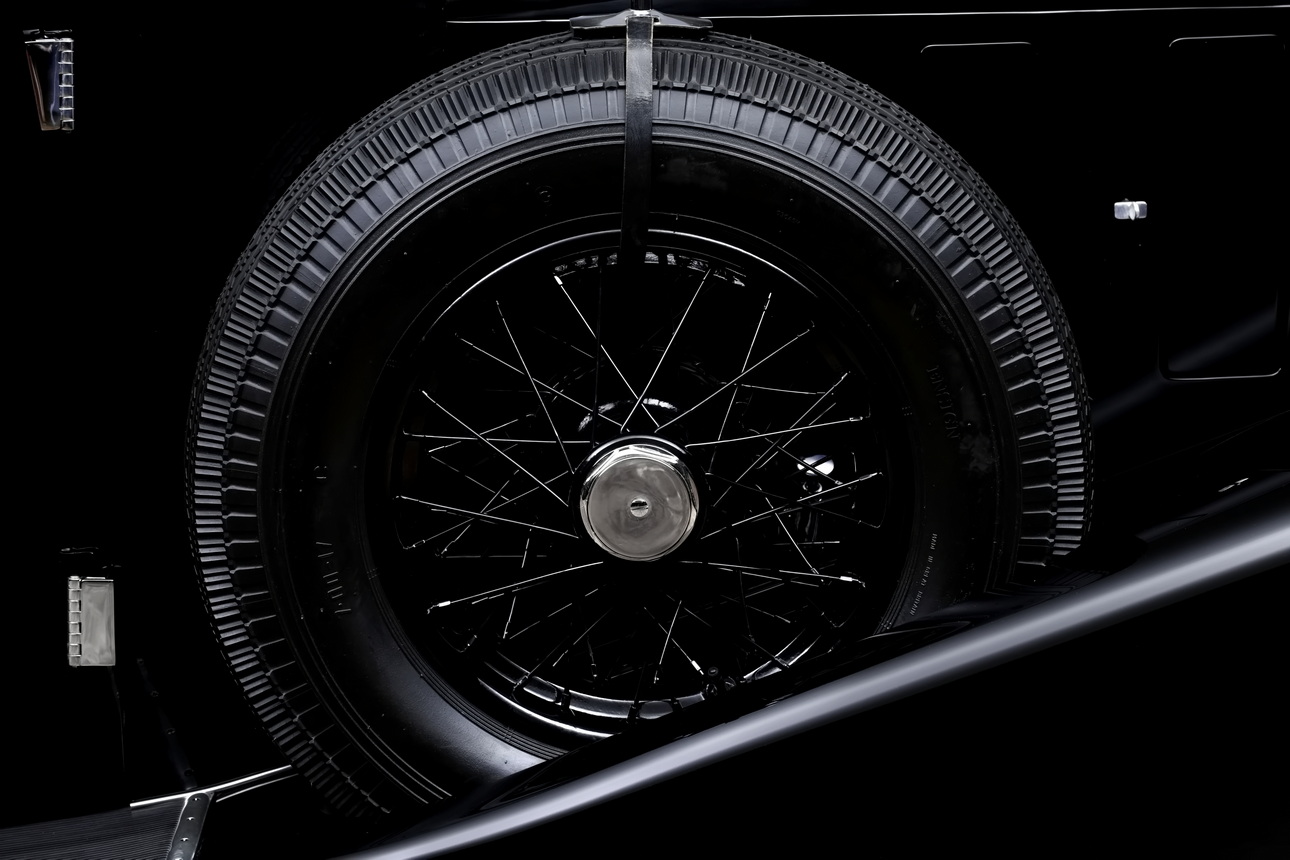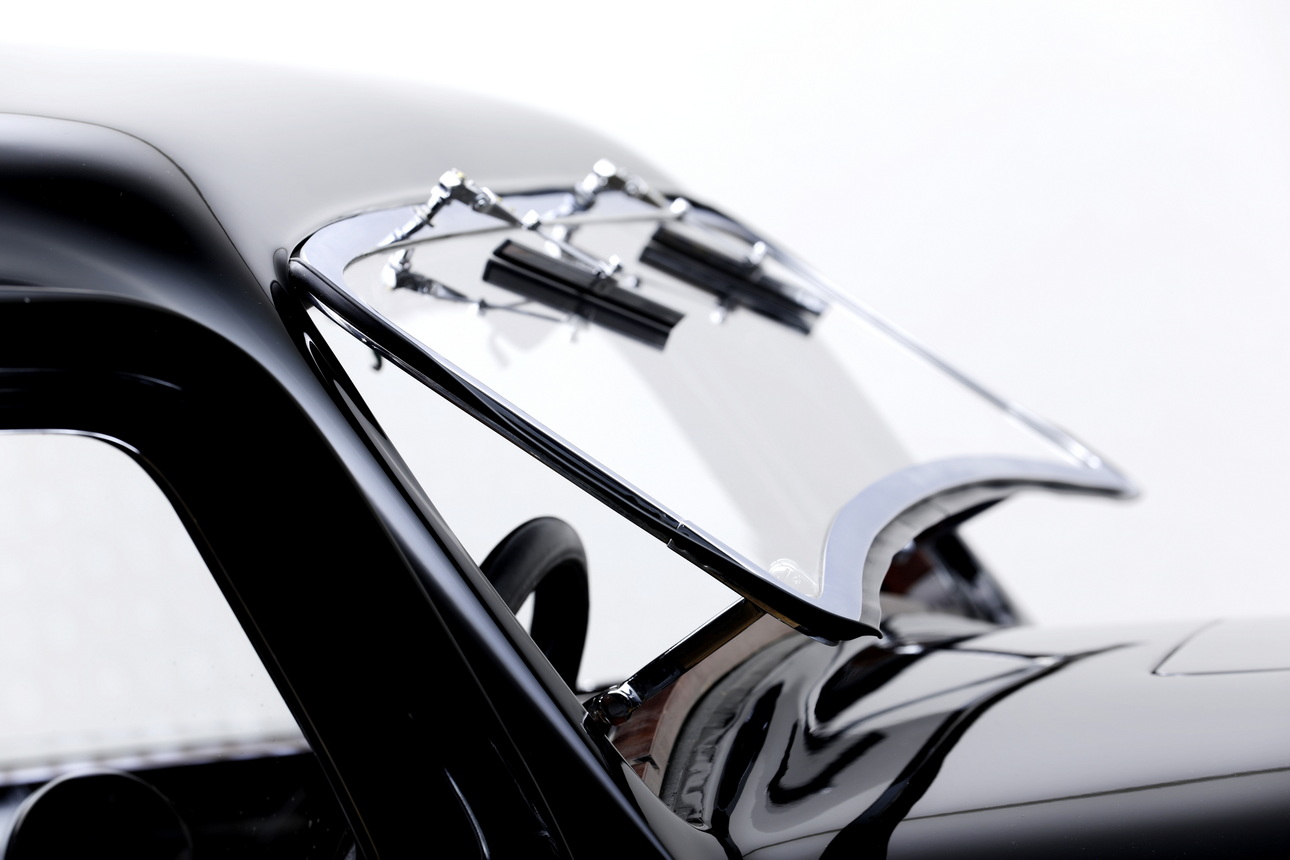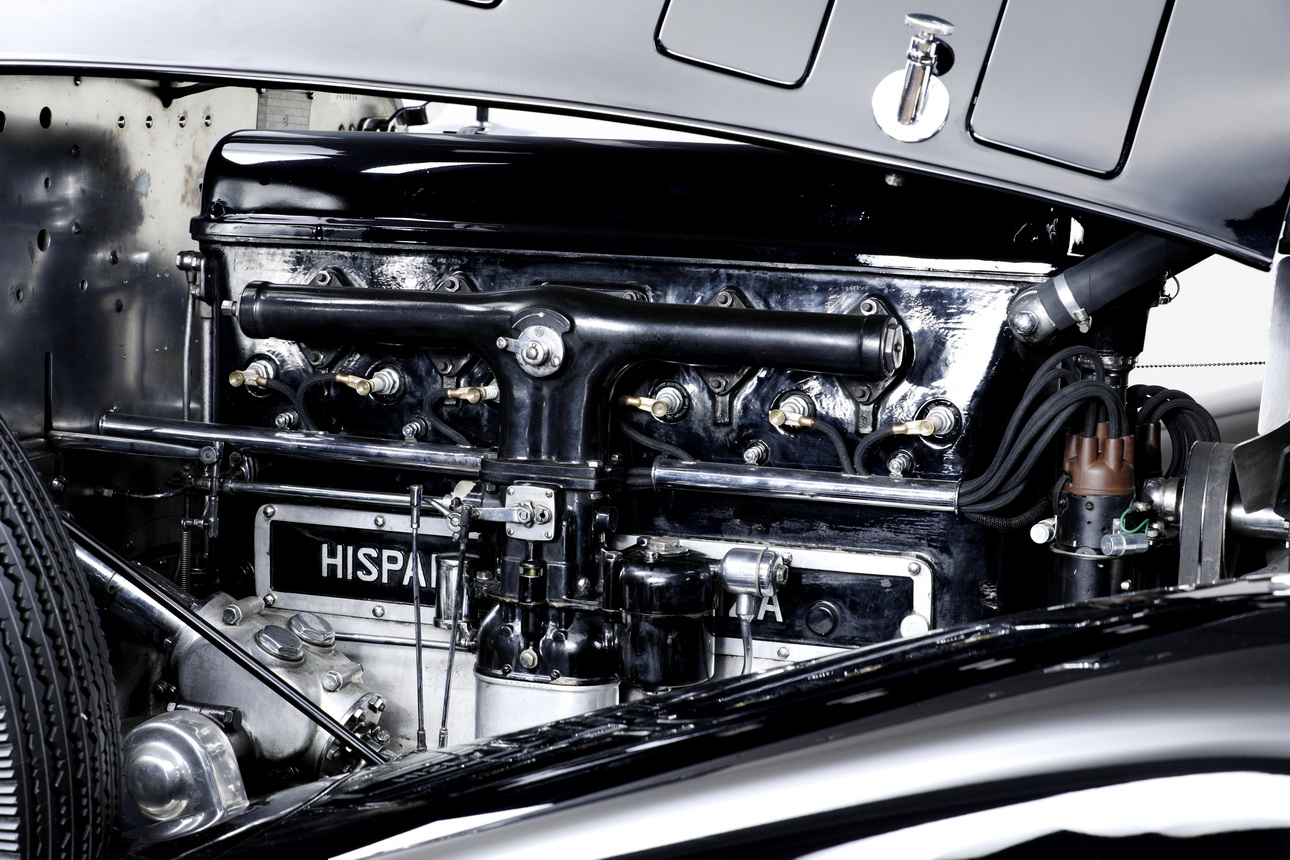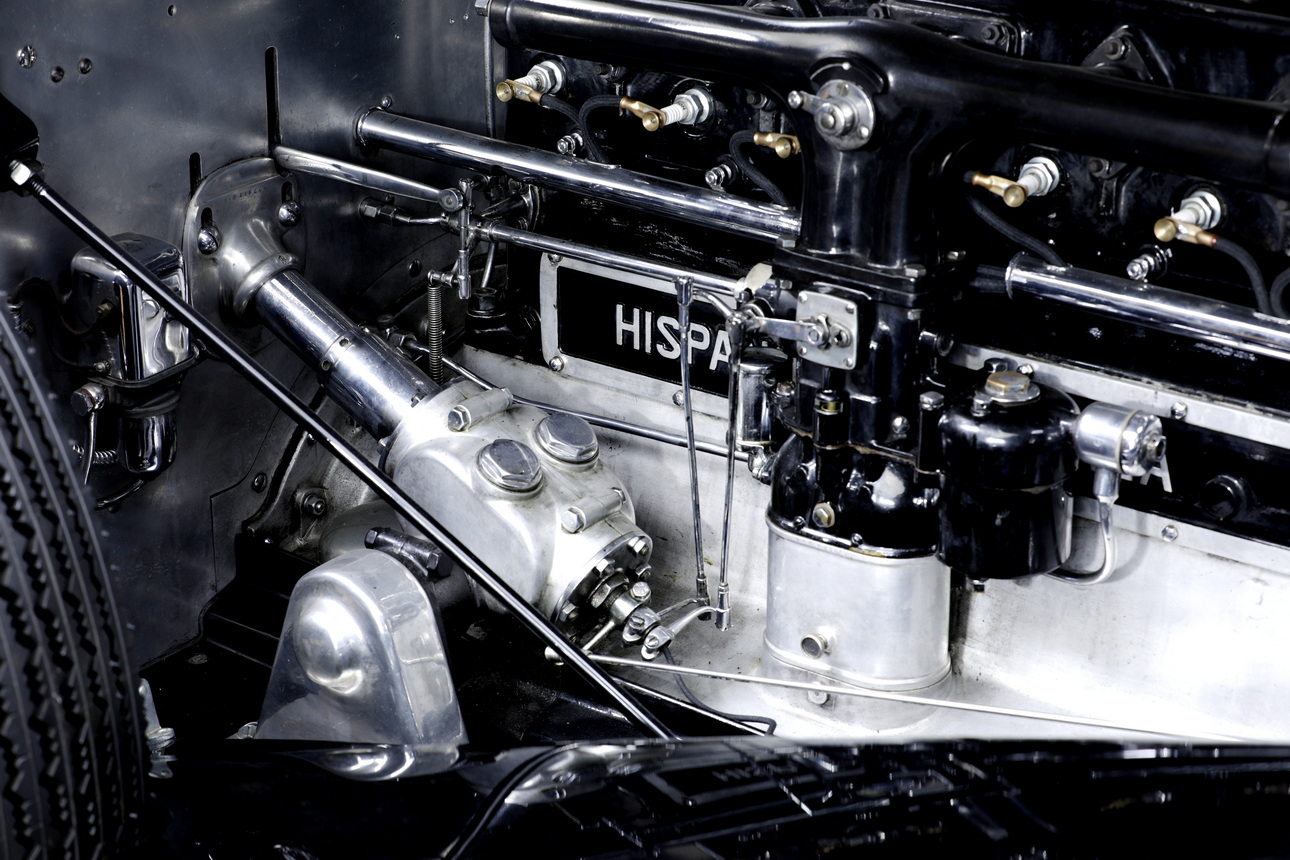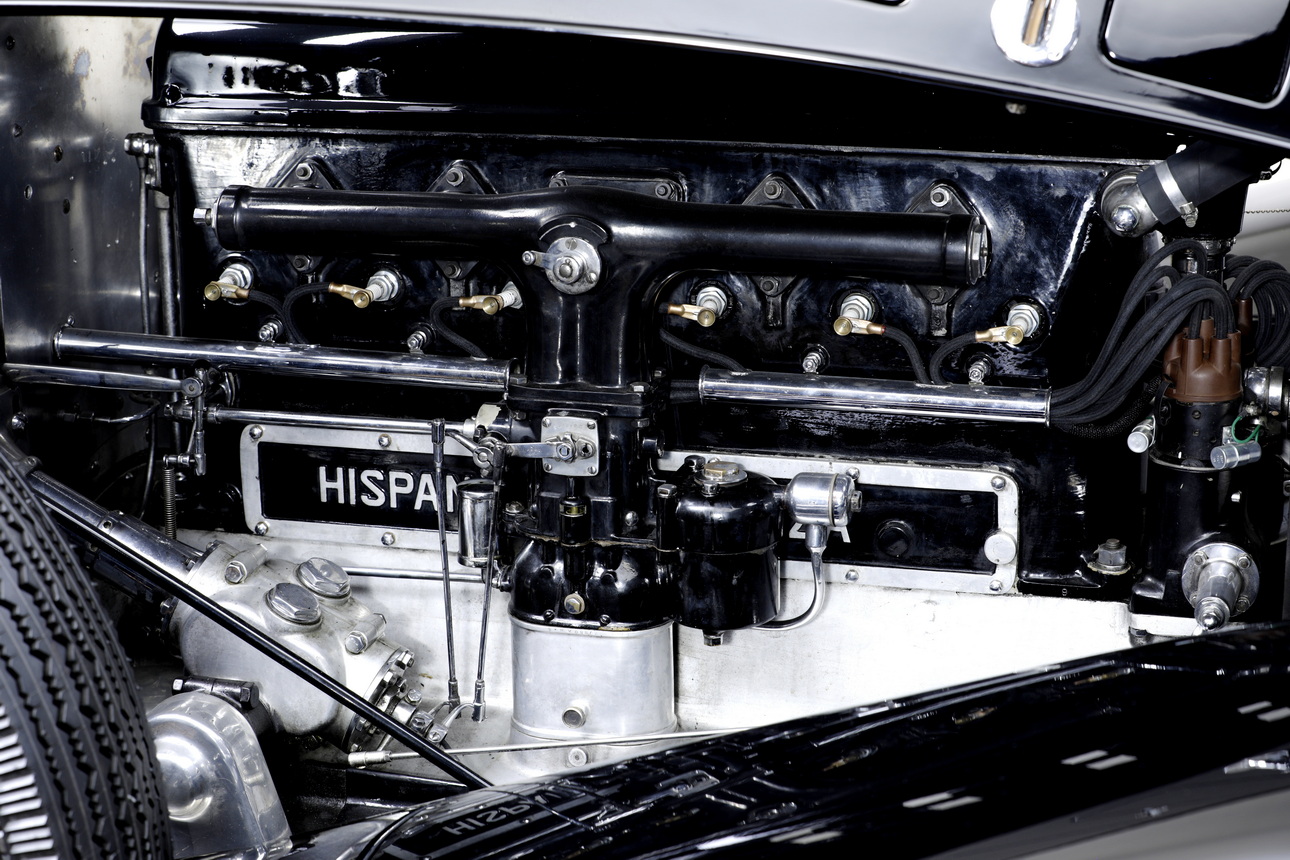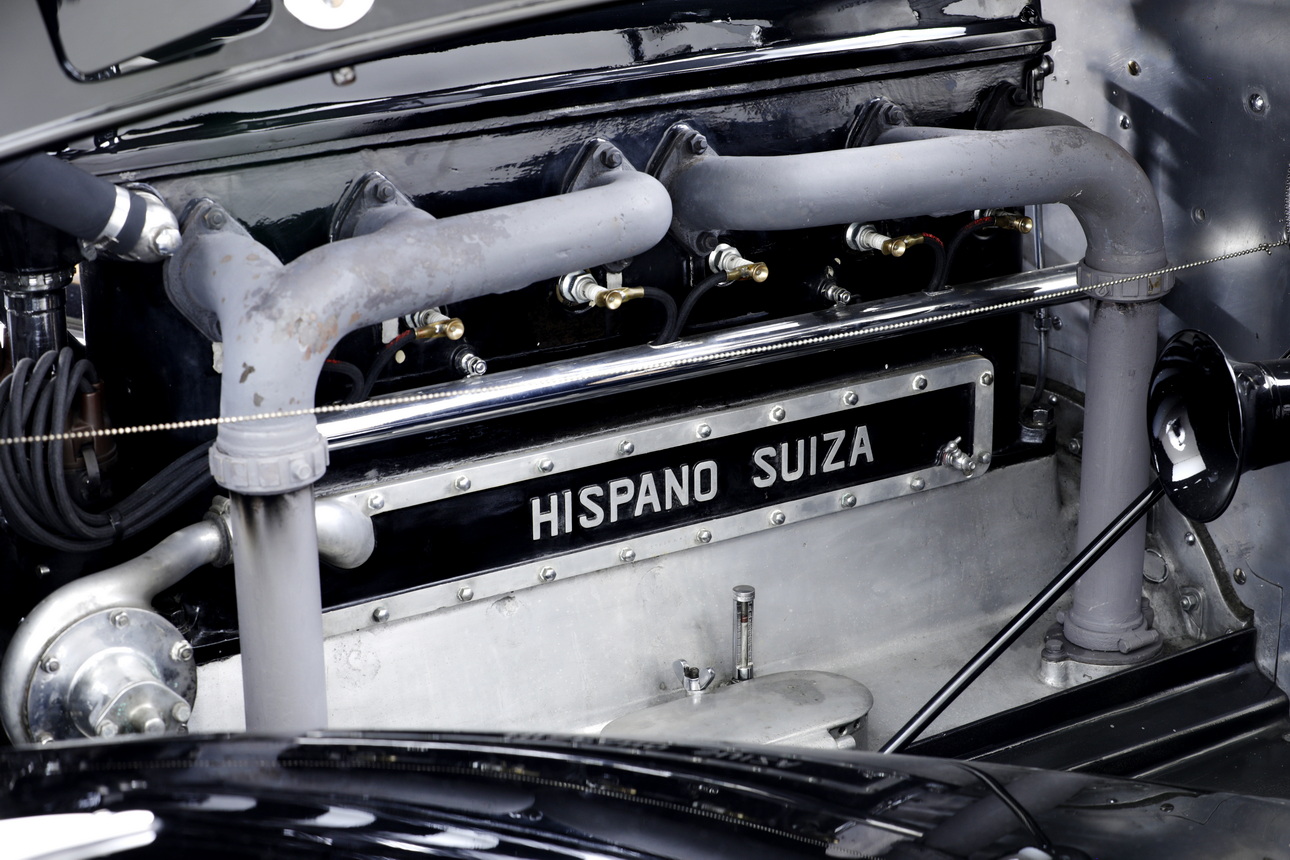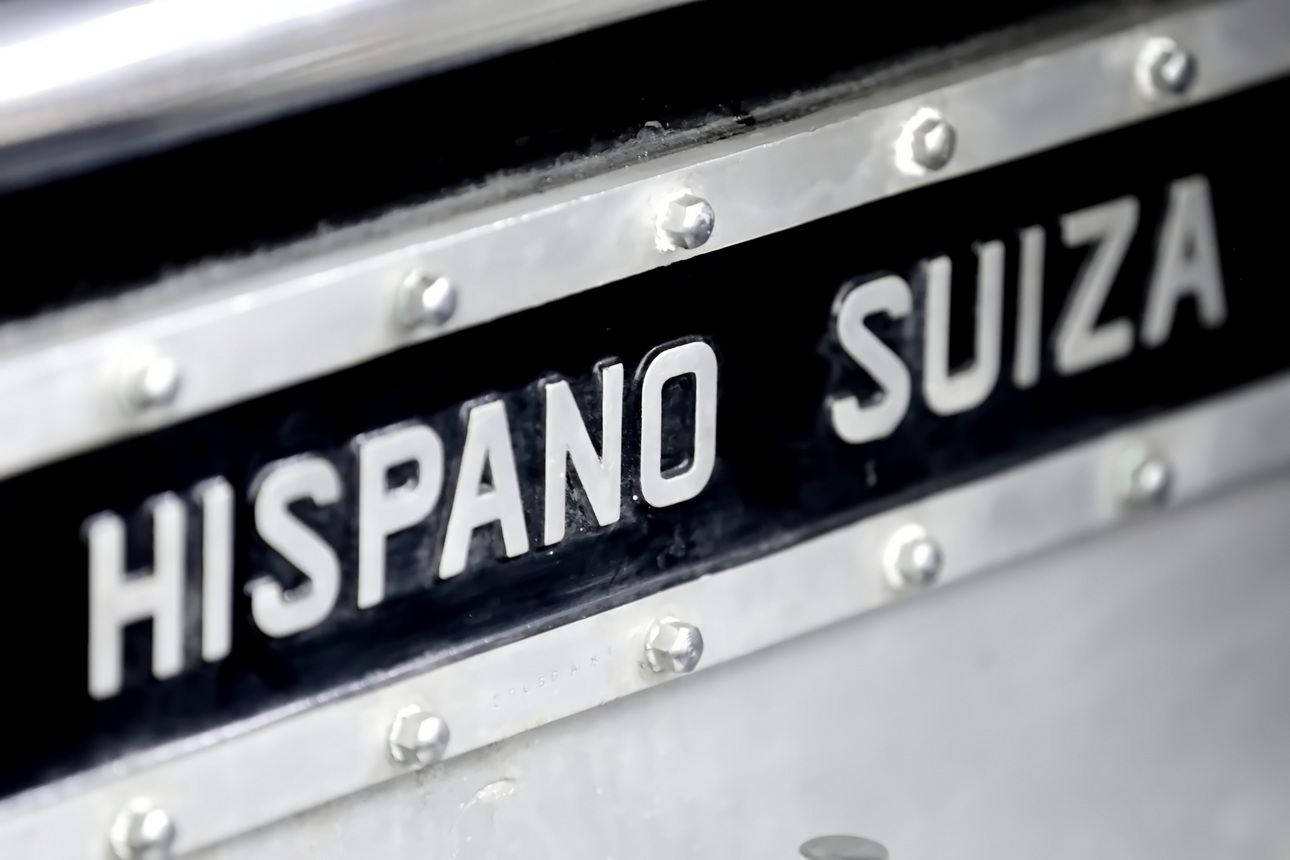Hispano Suiza T56 Bis One-off Coachwork by Fiol
Highlights
Data & Facts
This Automobile
This Hispano Suiza T56 Bis was delivered to Baltasar Fiol in Barcelona in 1934. It was one of the most prestigious Spanish coachbuilders, which usually fitted out luxury chassis such as Rolls-Royce, Cadillac, Packard and, of course, Hispano Suiza. The bodies manufactured by the company, founded in 1914, mostly had stylish, almost playful lines, which lent the large bodies mounted on luxury chassis with long wheelbases a sporty, elegant and sleek beauty.
This car is a masterful example of Fiol's rare ability to create an extraordinary and graceful ‘Berline de Voyage’ (travel saloon) with exquisite and sleek proportions instead of a heavy, stately saloon. The side profile, with its long, impressive bonnet and compact, four-door passenger compartment with a low roof and small windows, creates an elegant and ‘conspiratorial’ appearance. The comparatively straightforward design for a luxury car of this era nevertheless features many refined yet discreet details that are waiting to be discovered. Another attraction are the side doors, which open like a wardrobe to reveal the original red leather interior.
Unfortunately, the early history of this model, which is believed to have spent most of its time in Spain, is unknown. However, historical photographs of this model exist in the literature on Hispano Suiza. The penultimate owner purchased the car in 2012 from a lady in Bilbao. From 2014 to 2019, it underwent extensive restoration in the Czech Republic. There are photos documenting this process. The engine is said to have been in perfect condition prior to restoration, so it was left untouched, as was the interior. Most of the beautiful original leather, instruments, carpet and woodwork have been preserved. The current owner acquired the vehicle in 2024. Recently, the gearbox was reconditioned and the engine serviced.
This is an extremely rare opportunity to acquire a unique automobile with impressive presence and appeal at all concours events and on the road.
Model History
La Hispano-Suiza Fábrica de Automóviles was founded in 1904 and manufactured cars, trucks, buses, aircraft engines and weapons in Barcelona until 1946. In 1911, a subsidiary was established in Paris. Due to the strength of the French market for luxury cars, the production and development of such models was relocated there.
In 1919, a new model, the H6, made its debut at the Paris Motor Show with a 6.6-litre six-cylinder inline engine. The engine was the highlight of the new chassis: an all-aluminium engine with dual ignition, king shaft and seven-bearing milled crankshaft, which could not and should not hide its aviation origins. Power was transmitted to the rear axle via a three-speed manual transmission. The vehicle's deceleration was handled by a special construction: light alloy drum brakes on all four wheels were supported by a mechanical brake booster – a novelty in the automotive sector that was licensed to several manufacturers, including arch-rival Rolls-Royce. The new model enjoyed great popularity in elite circles. Numerous examples were delivered as rolling chassis and fitted with special and mostly individual bodywork by various coach builders.
In 1924, the third evolutionary stage of the H6 model was presented, the H6C. While the previous evolution (H6B) only featured new clutch technology, the H6C variant had a redesigned engine that could deliver approximately 150 hp from 8 litres of displacement.
Until then, the model had only been built in France, the main market for luxury vehicles. Then it was decided to also manufacture the H6C in La Sagrera, Spain, from 1929 onwards. The H6Cs built there were named T56 46CV, with the last number indicating the engine's taxable power. A total of around 200 T56 chassis were manufactured in Spain by 1940. The French-made counterpart had already been discontinued five years earlier after 345 units had been built. The T56 Bis was a technically improved and upgraded version of the T56, refined with components from the French production series.
This Automobile
This Hispano Suiza T56 Bis was delivered to Baltasar Fiol in Barcelona in 1934. It was one of the most prestigious Spanish coachbuilders, which usually fitted out luxury chassis such as Rolls-Royce, Cadillac, Packard and, of course, Hispano Suiza. The bodies manufactured by the company, founded in 1914, mostly had stylish, almost playful lines, which lent the large bodies mounted on luxury chassis with long wheelbases a sporty, elegant and sleek beauty.
This car is a masterful example of Fiol's rare ability to create an extraordinary and graceful ‘Berline de Voyage’ (travel saloon) with exquisite and sleek proportions instead of a heavy, stately saloon. The side profile, with its long, impressive bonnet and compact, four-door passenger compartment with a low roof and small windows, creates an elegant and ‘conspiratorial’ appearance. The comparatively straightforward design for a luxury car of this era nevertheless features many refined yet discreet details that are waiting to be discovered. Another attraction are the side doors, which open like a wardrobe to reveal the original red leather interior.
Unfortunately, the early history of this model, which is believed to have spent most of its time in Spain, is unknown. However, historical photographs of this model exist in the literature on Hispano Suiza. The penultimate owner purchased the car in 2012 from a lady in Bilbao. From 2014 to 2019, it underwent extensive restoration in the Czech Republic. There are photos documenting this process. The engine is said to have been in perfect condition prior to restoration, so it was left untouched, as was the interior. Most of the beautiful original leather, instruments, carpet and woodwork have been preserved. The current owner acquired the vehicle in 2024. Recently, the gearbox was reconditioned and the engine serviced.
This is an extremely rare opportunity to acquire a unique automobile with impressive presence and appeal at all concours events and on the road.
Model History
La Hispano-Suiza Fábrica de Automóviles was founded in 1904 and manufactured cars, trucks, buses, aircraft engines and weapons in Barcelona until 1946. In 1911, a subsidiary was established in Paris. Due to the strength of the French market for luxury cars, the production and development of such models was relocated there.
In 1919, a new model, the H6, made its debut at the Paris Motor Show with a 6.6-litre six-cylinder inline engine. The engine was the highlight of the new chassis: an all-aluminium engine with dual ignition, king shaft and seven-bearing milled crankshaft, which could not and should not hide its aviation origins. Power was transmitted to the rear axle via a three-speed manual transmission. The vehicle's deceleration was handled by a special construction: light alloy drum brakes on all four wheels were supported by a mechanical brake booster – a novelty in the automotive sector that was licensed to several manufacturers, including arch-rival Rolls-Royce. The new model enjoyed great popularity in elite circles. Numerous examples were delivered as rolling chassis and fitted with special and mostly individual bodywork by various coach builders.
In 1924, the third evolutionary stage of the H6 model was presented, the H6C. While the previous evolution (H6B) only featured new clutch technology, the H6C variant had a redesigned engine that could deliver approximately 150 hp from 8 litres of displacement.
Until then, the model had only been built in France, the main market for luxury vehicles. Then it was decided to also manufacture the H6C in La Sagrera, Spain, from 1929 onwards. The H6Cs built there were named T56 46CV, with the last number indicating the engine's taxable power. A total of around 200 T56 chassis were manufactured in Spain by 1940. The French-made counterpart had already been discontinued five years earlier after 345 units had been built. The T56 Bis was a technically improved and upgraded version of the T56, refined with components from the French production series.
